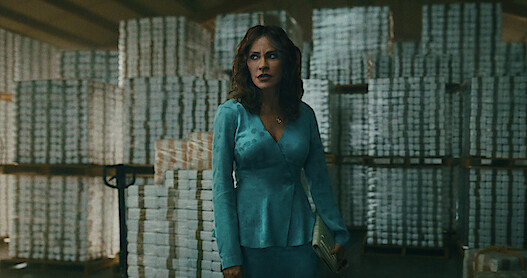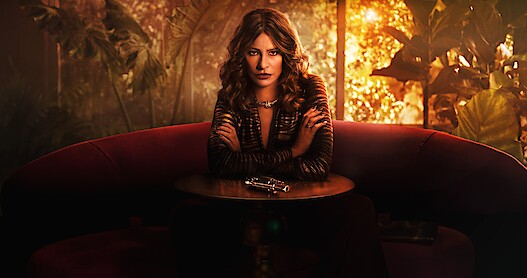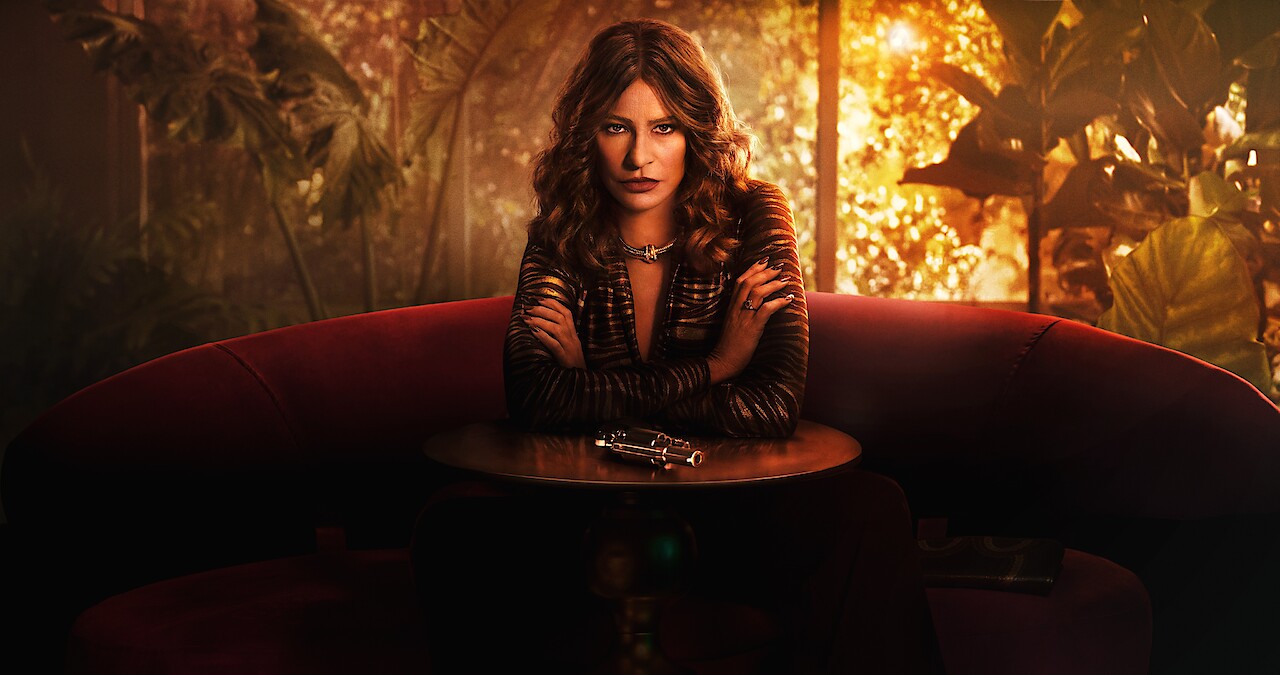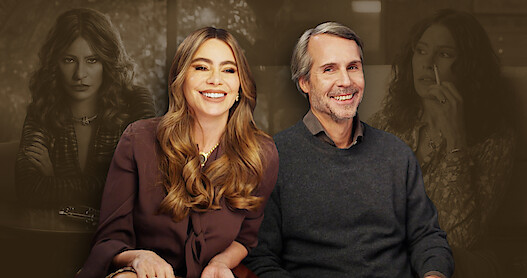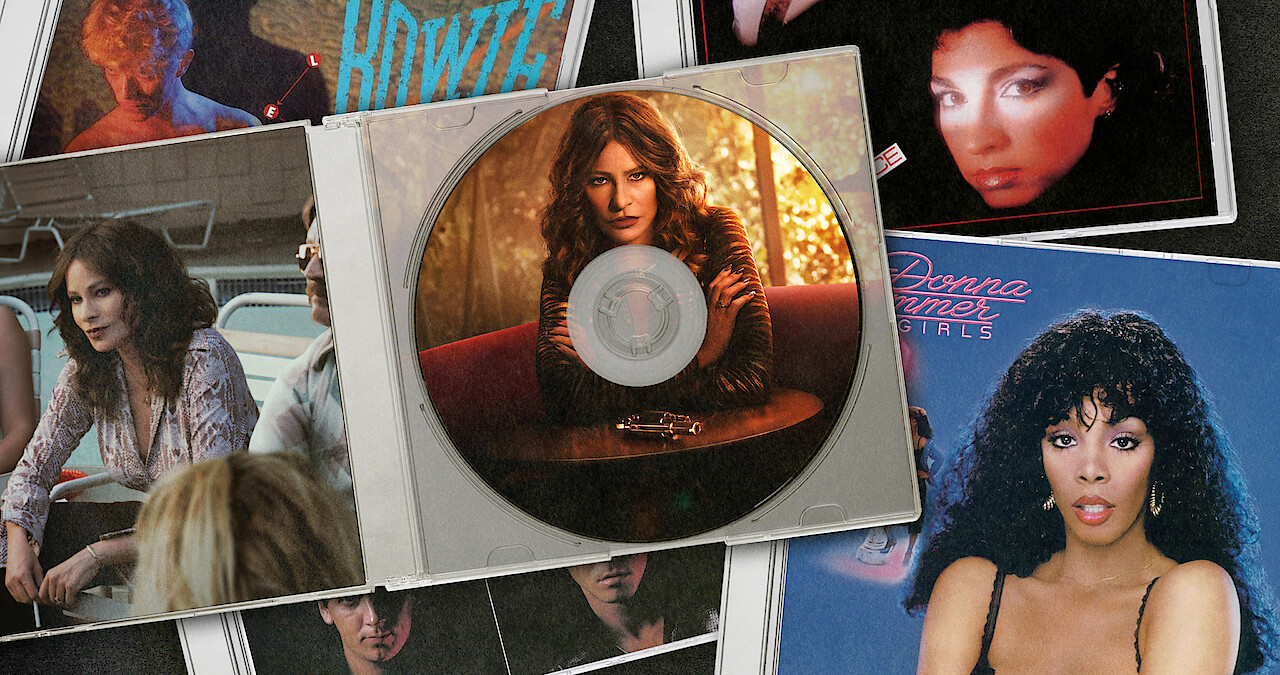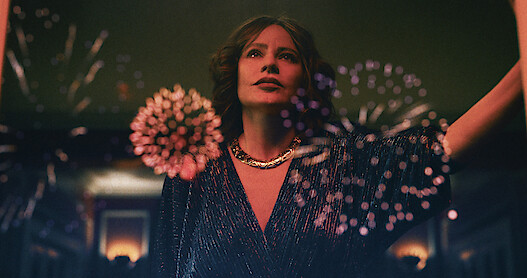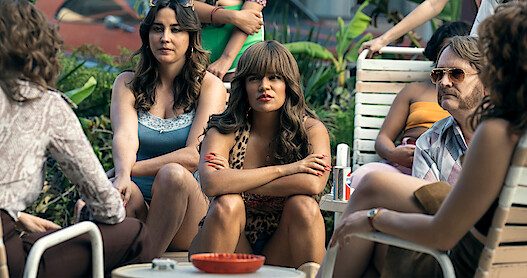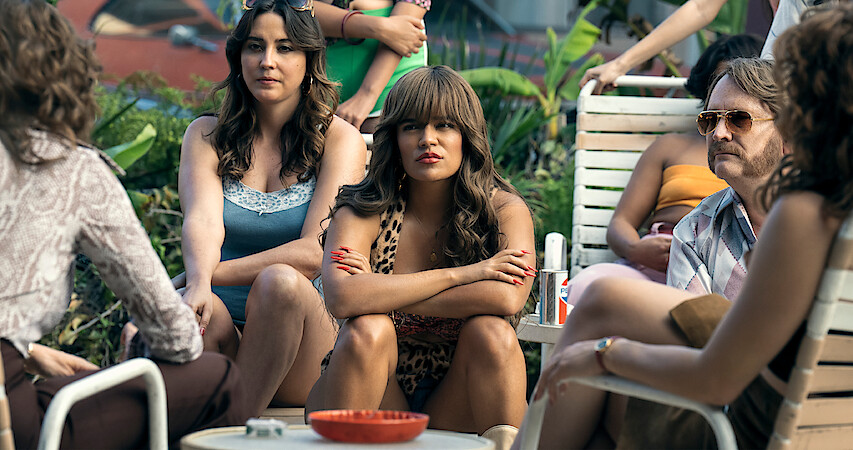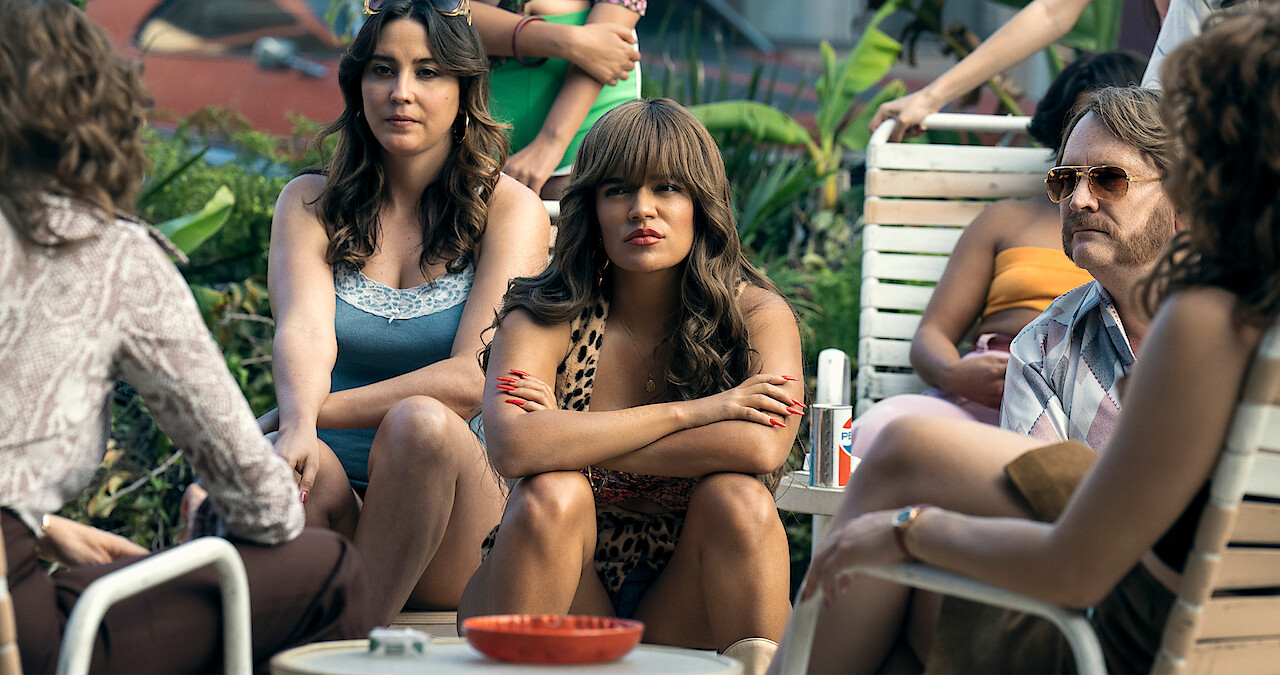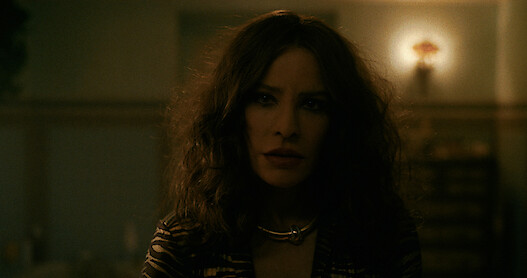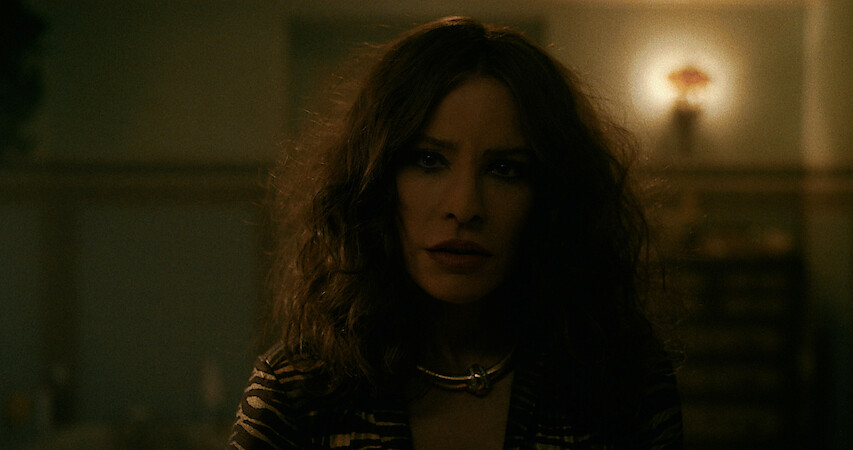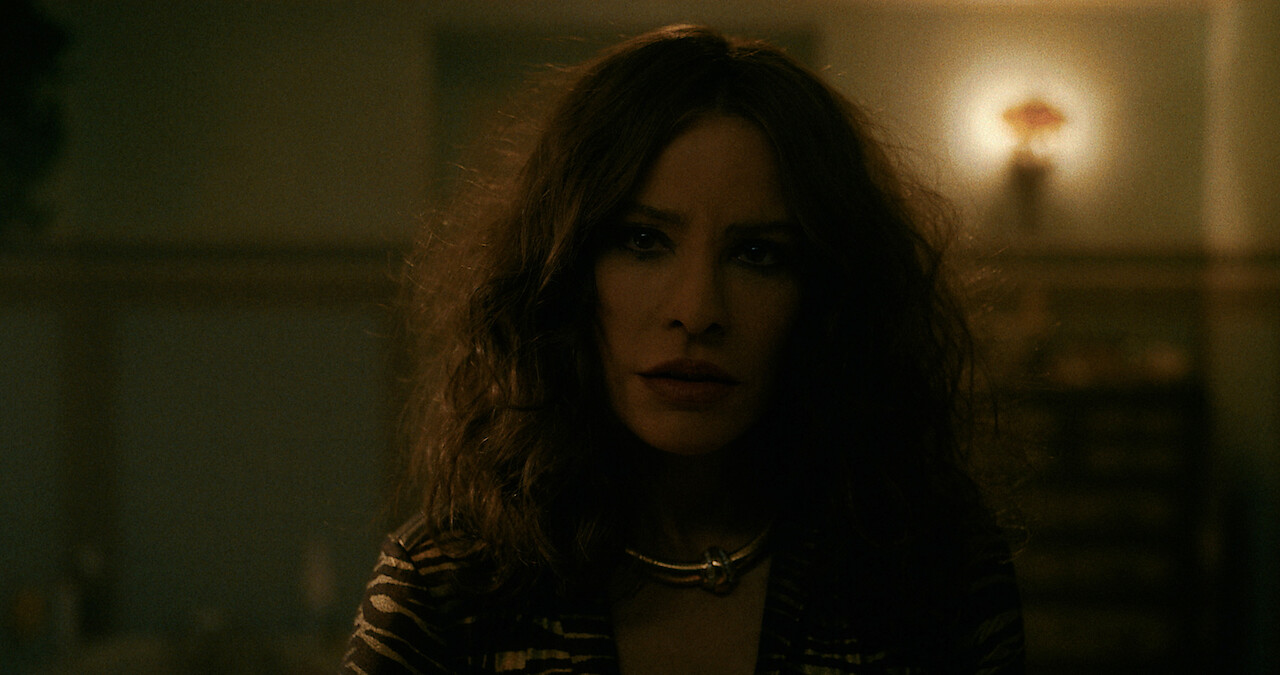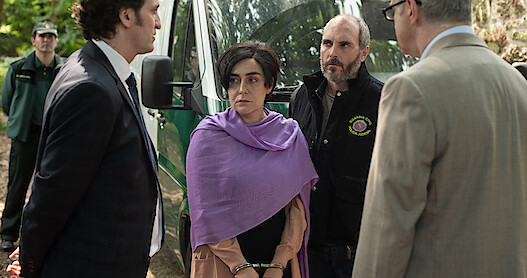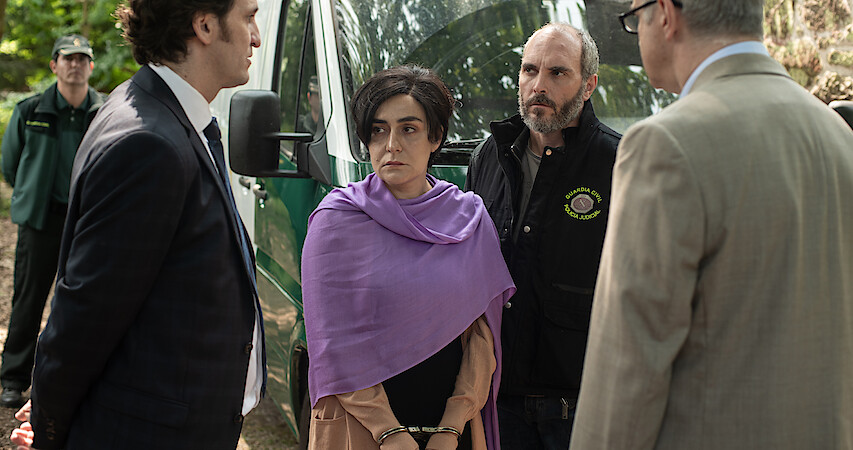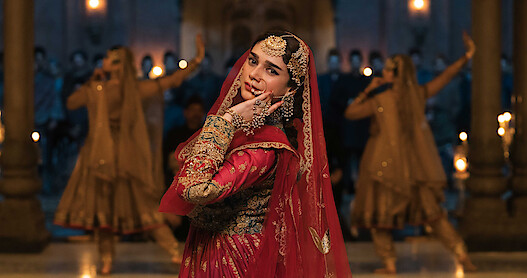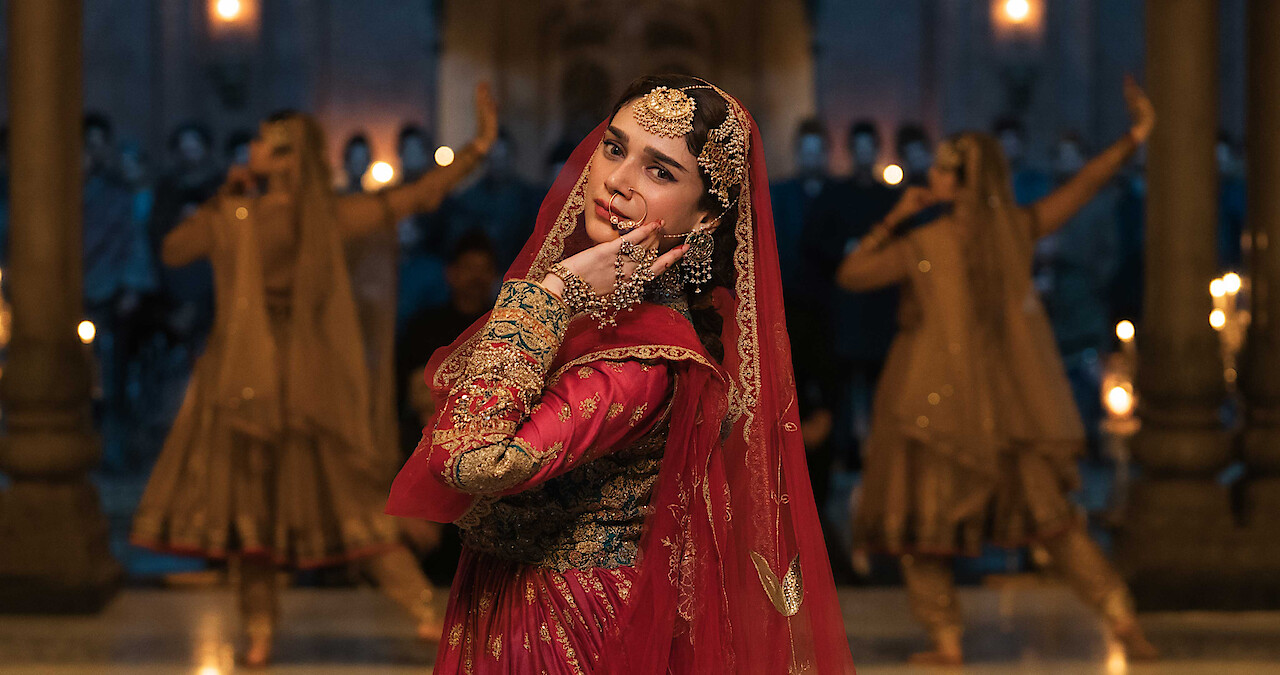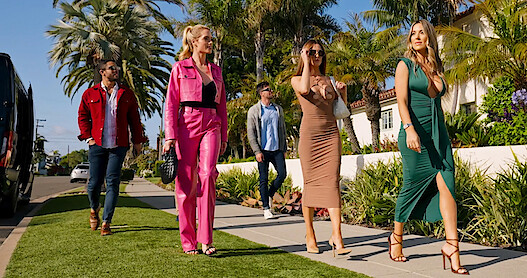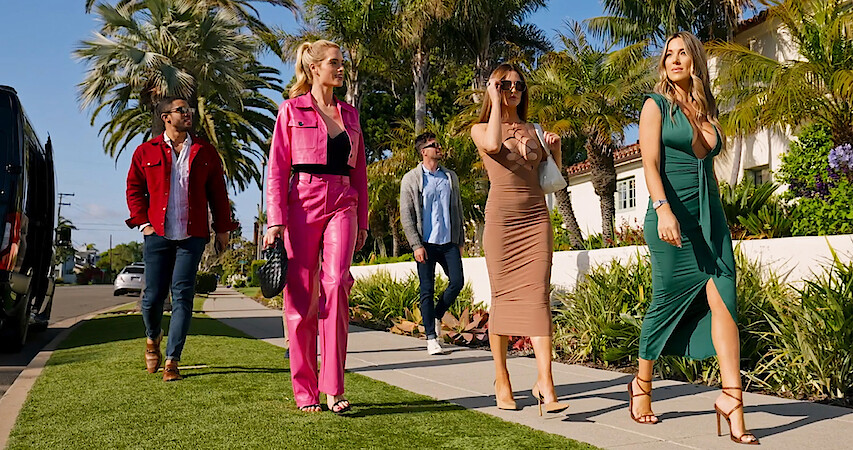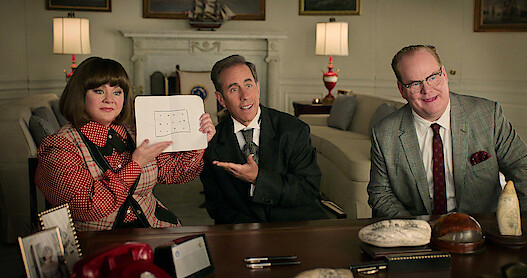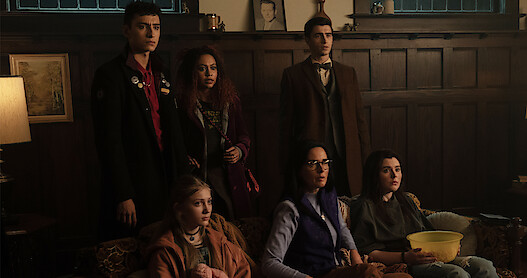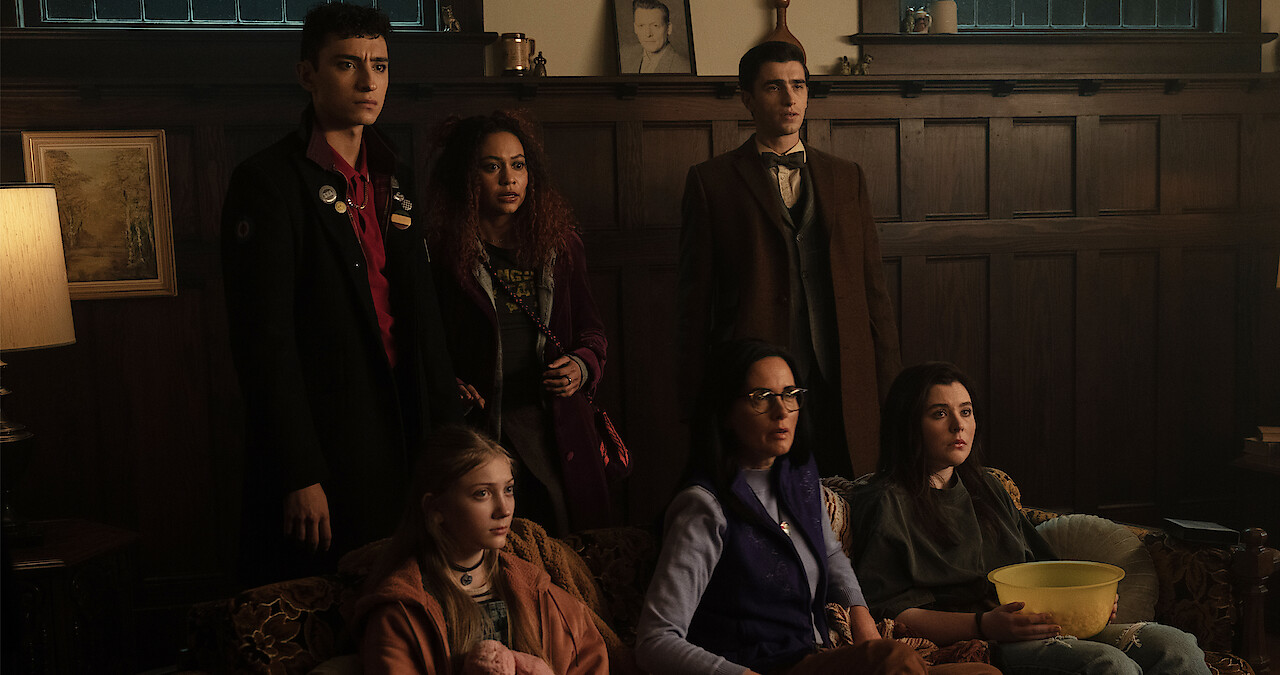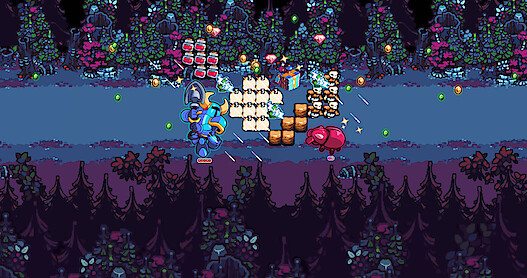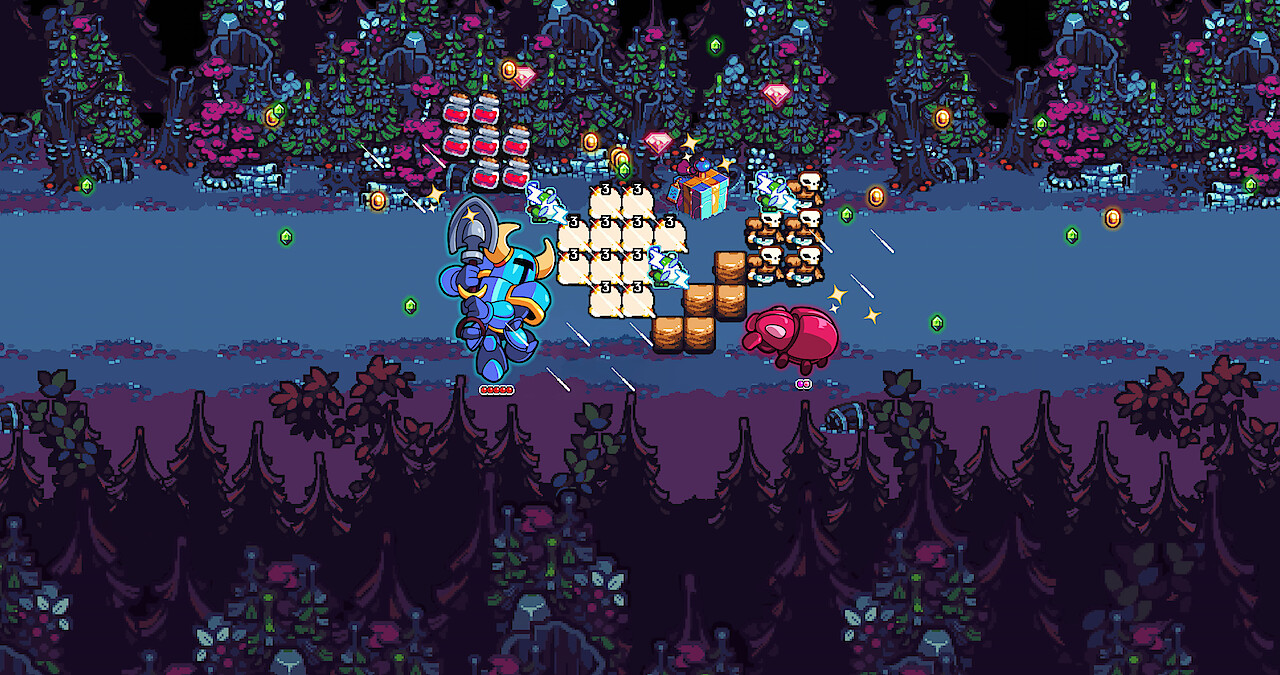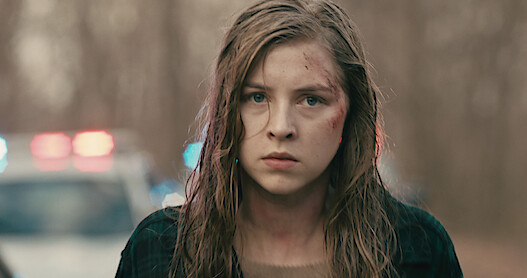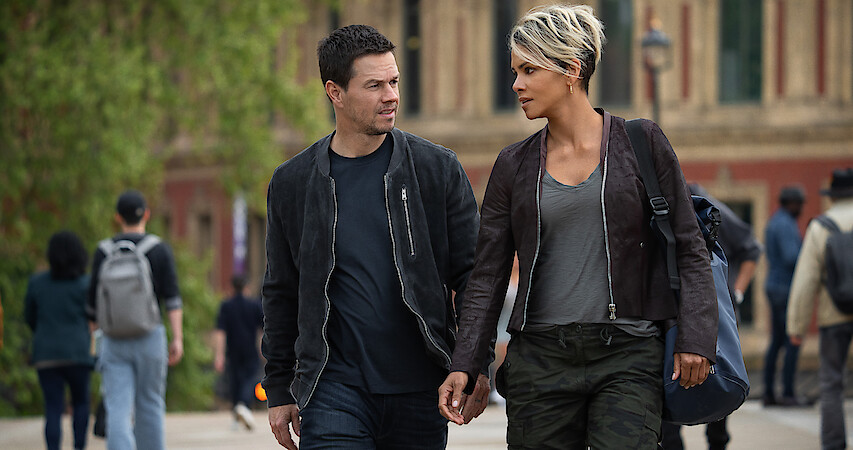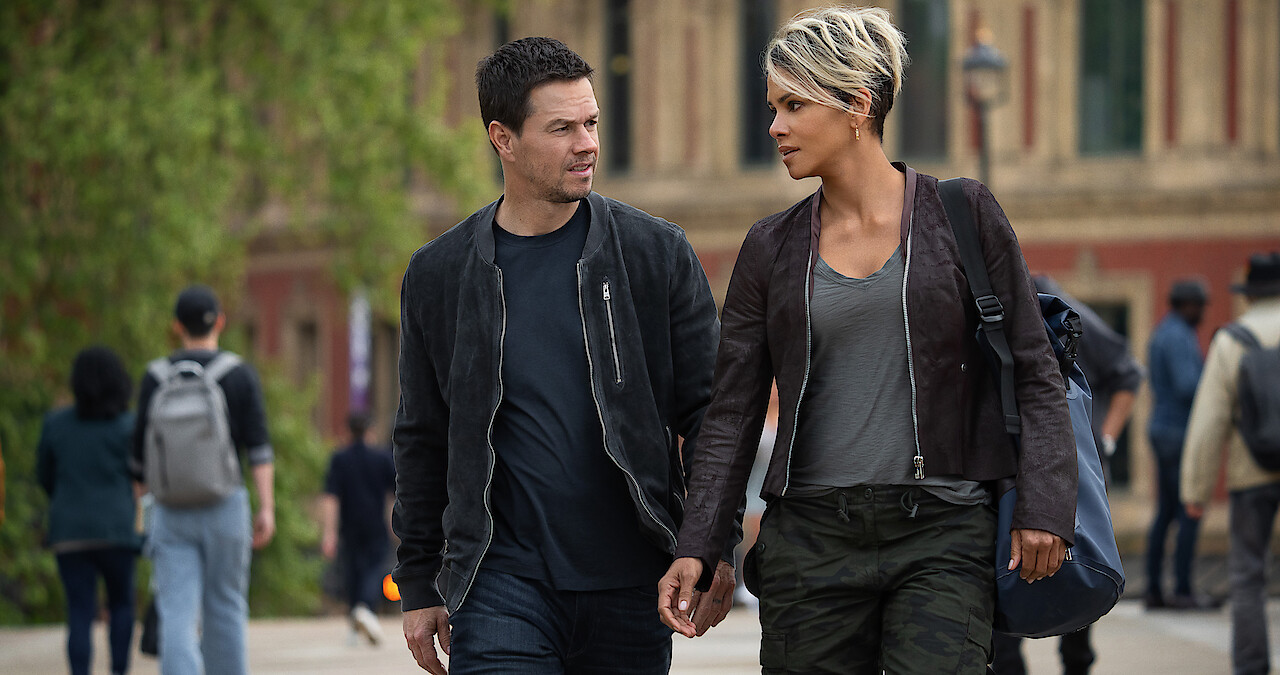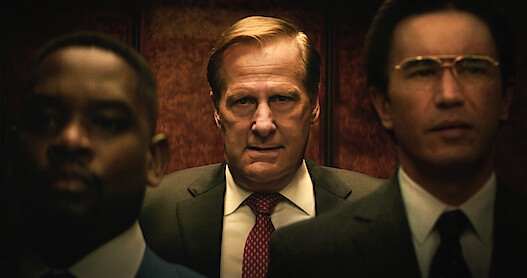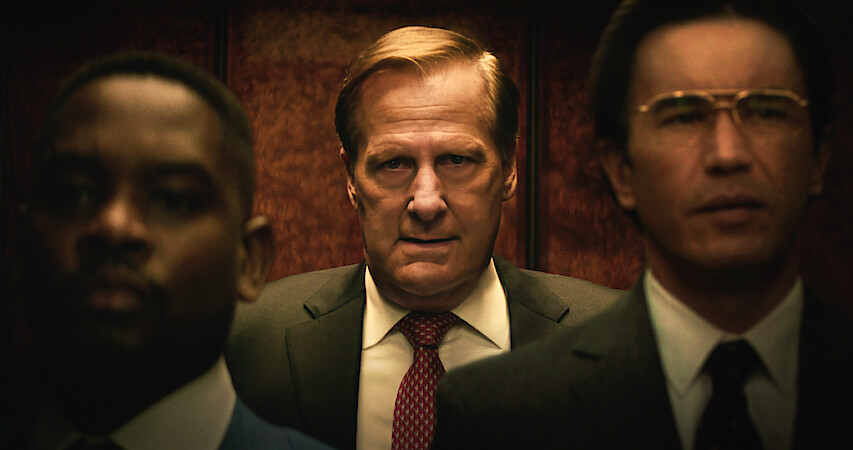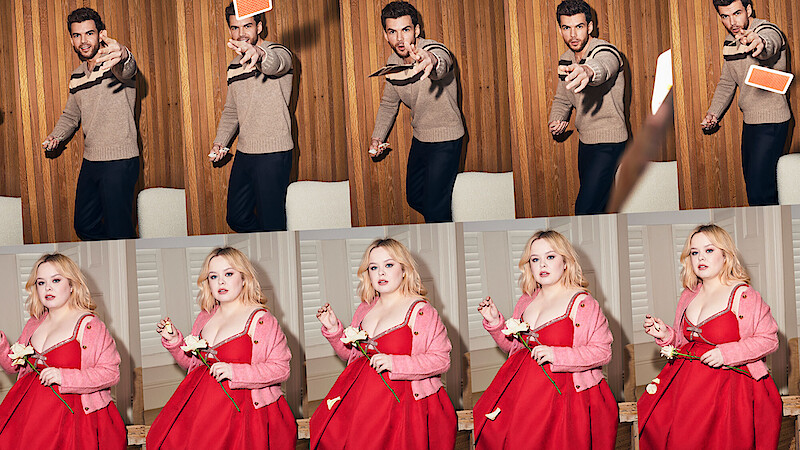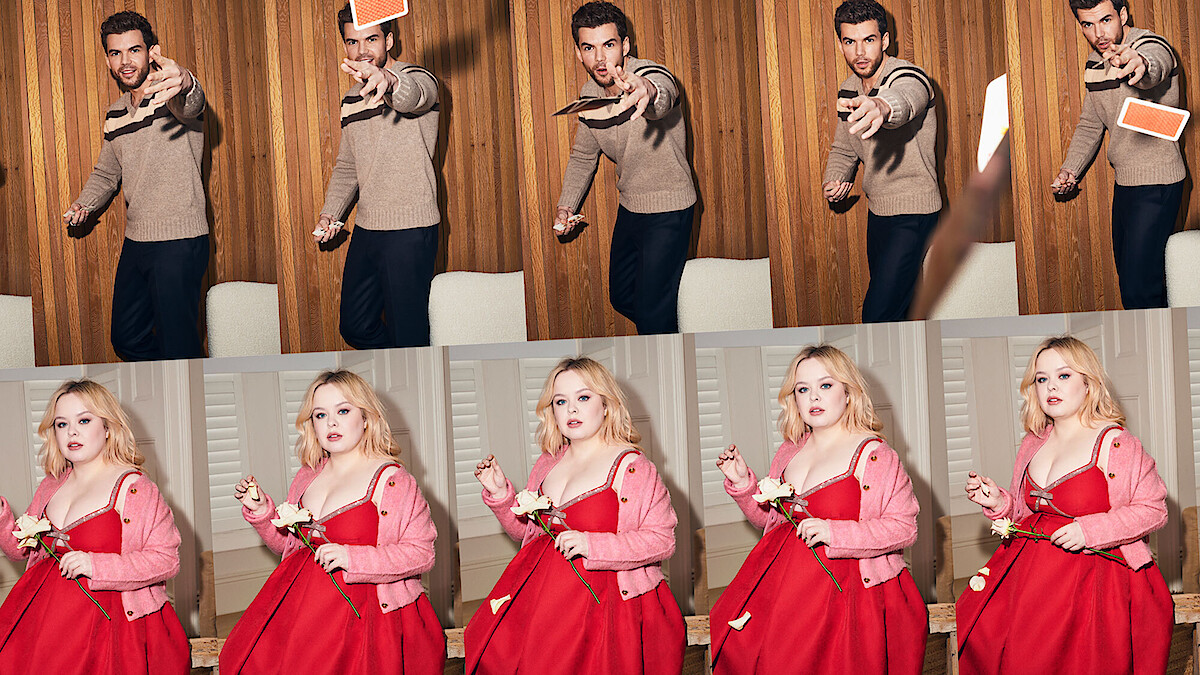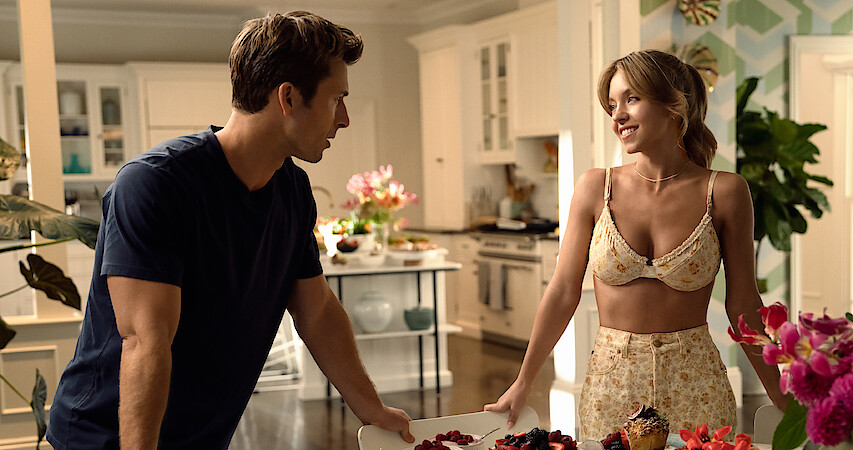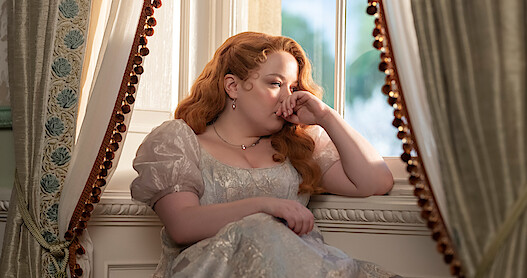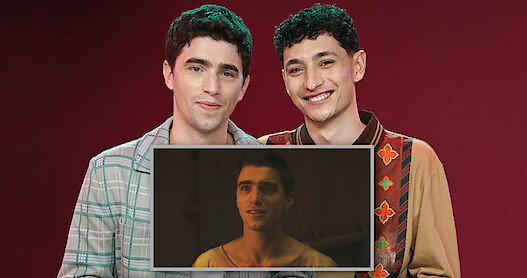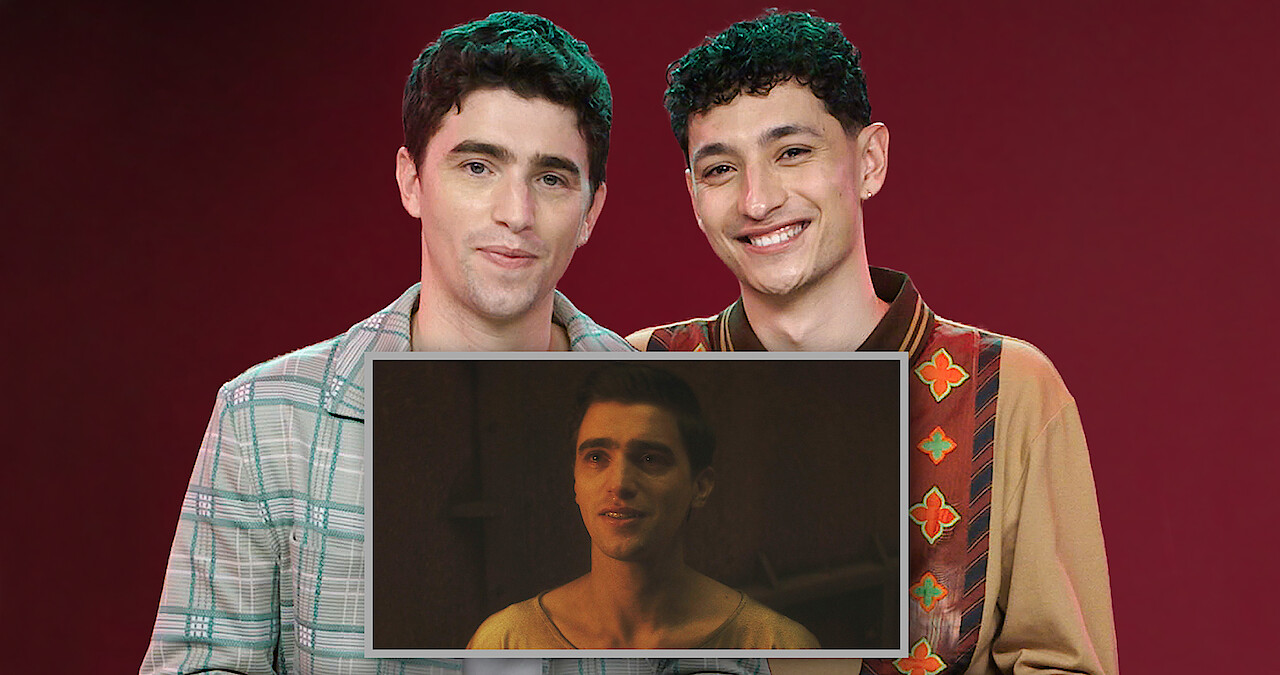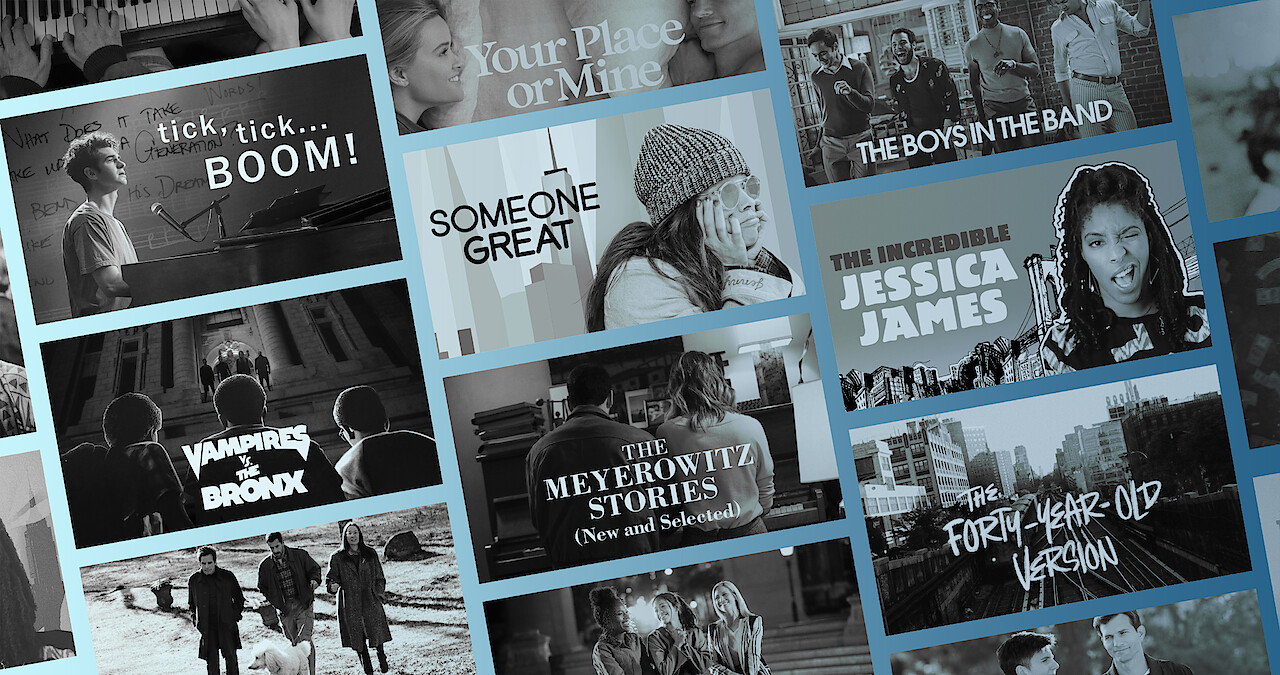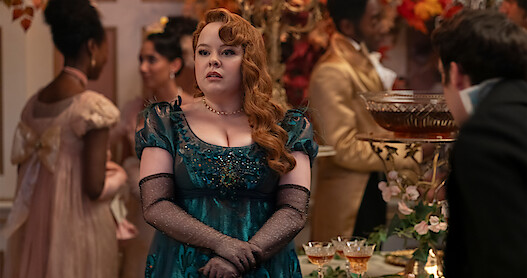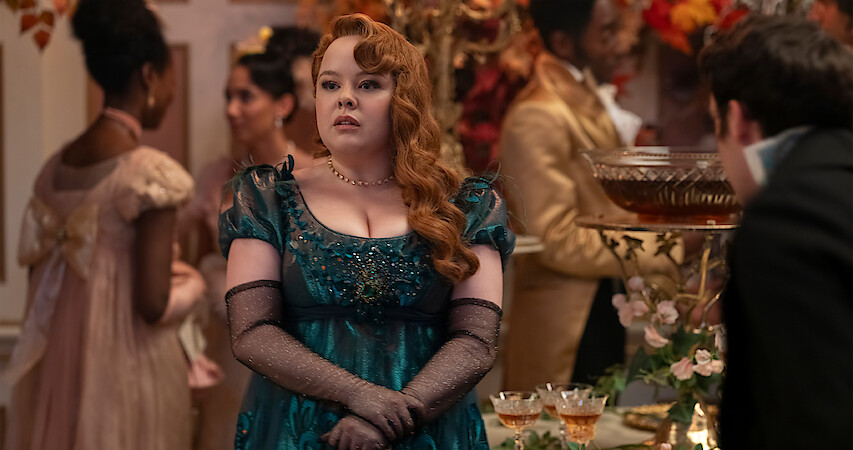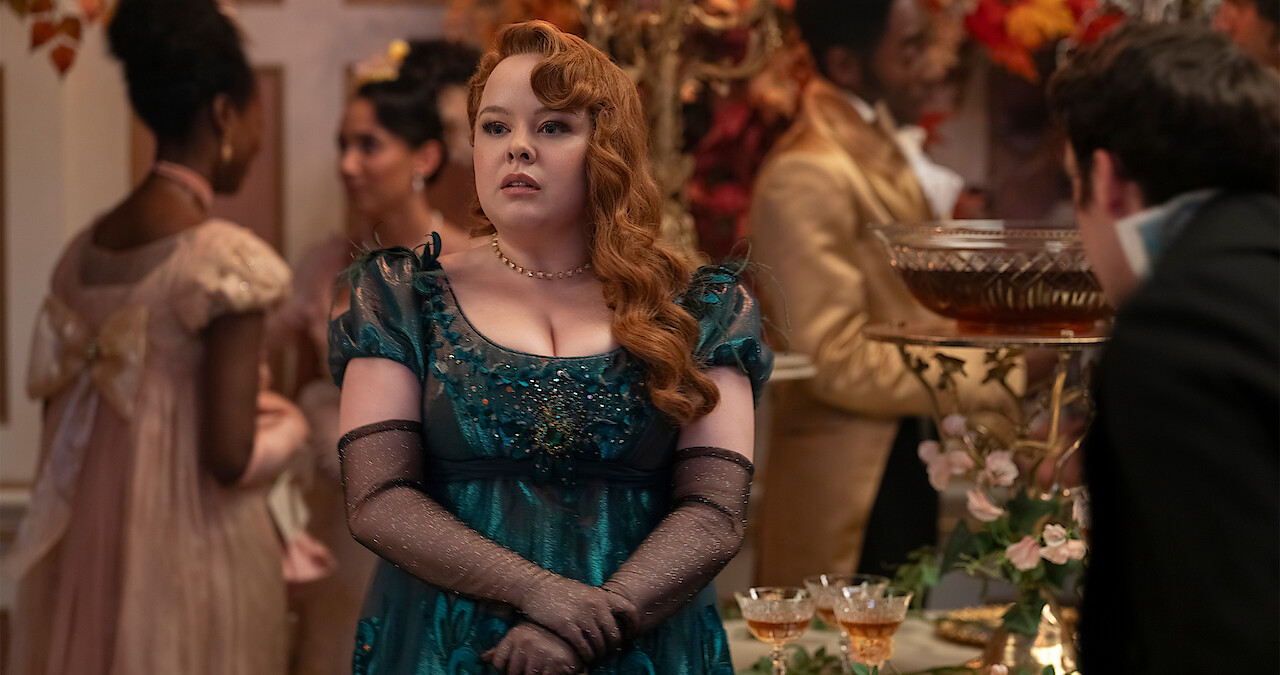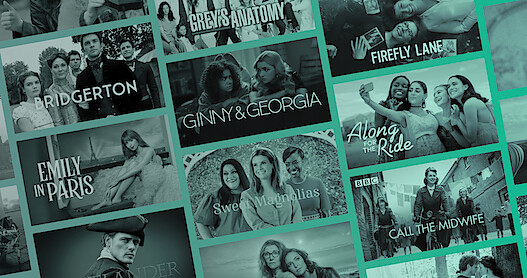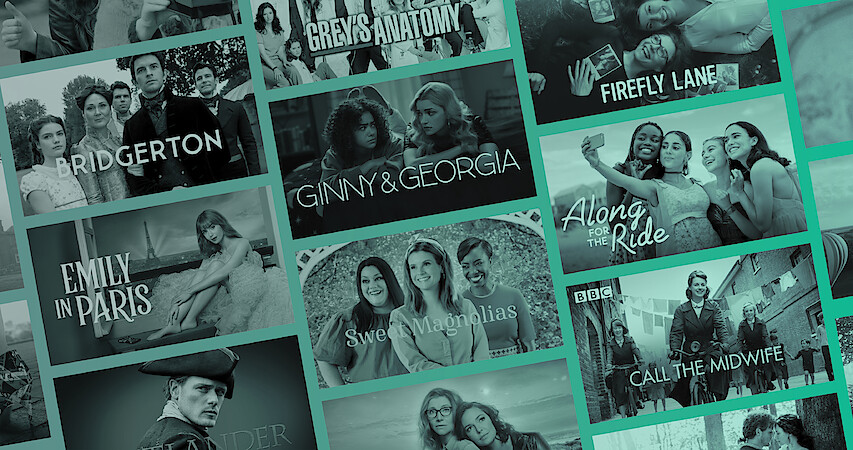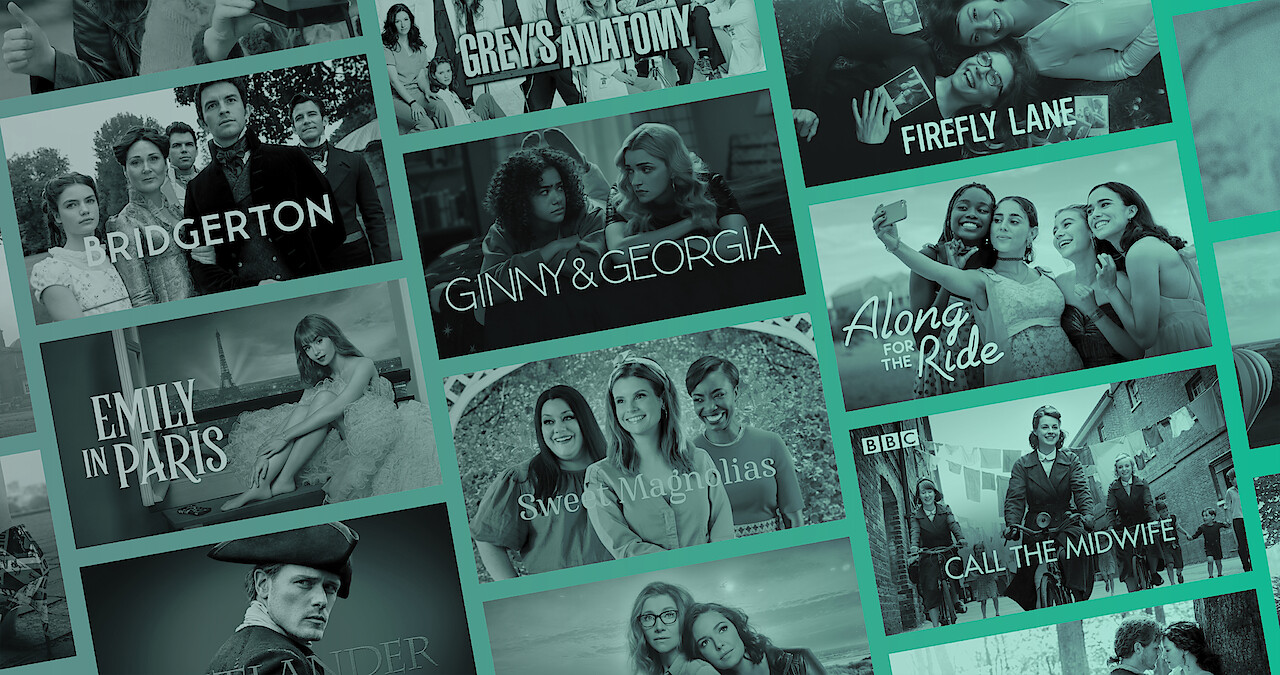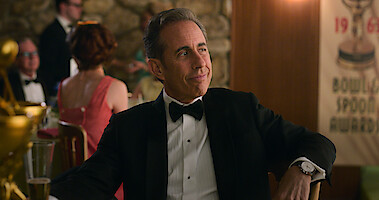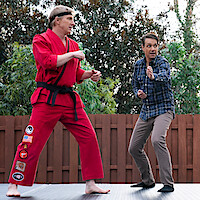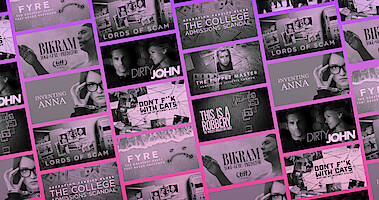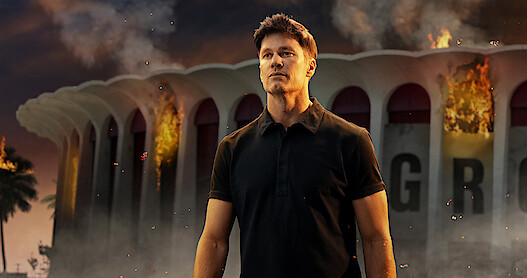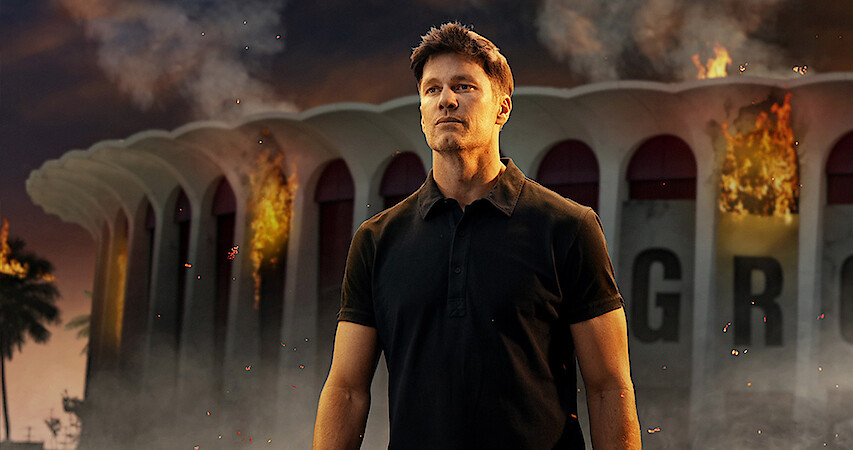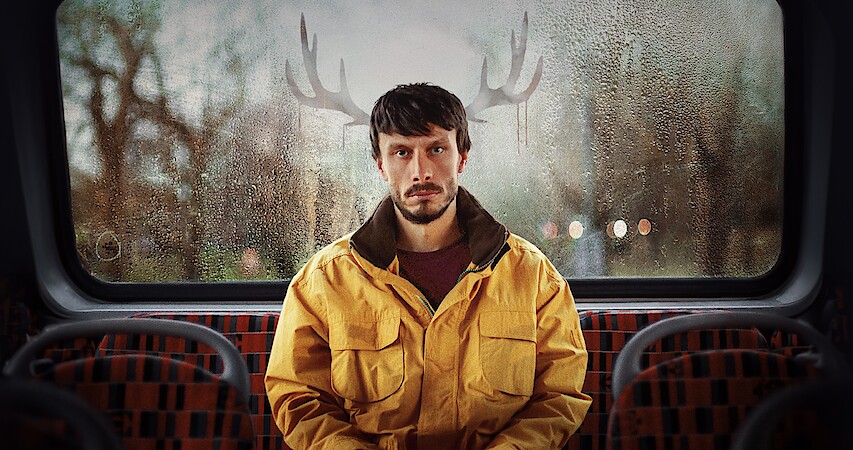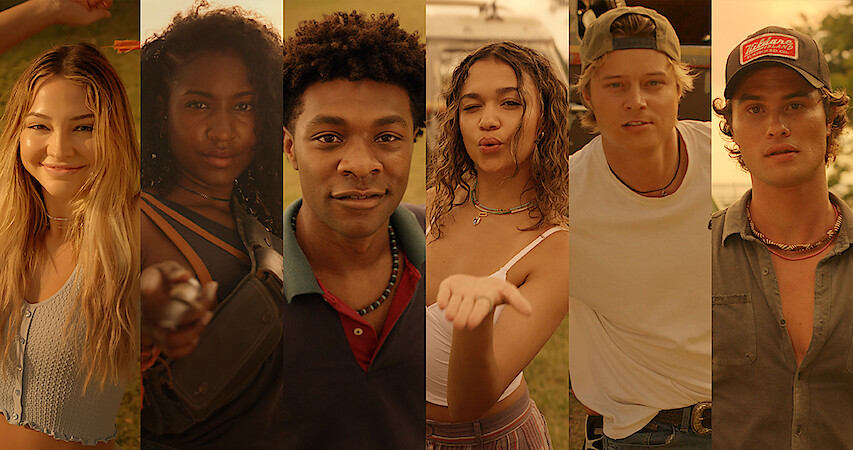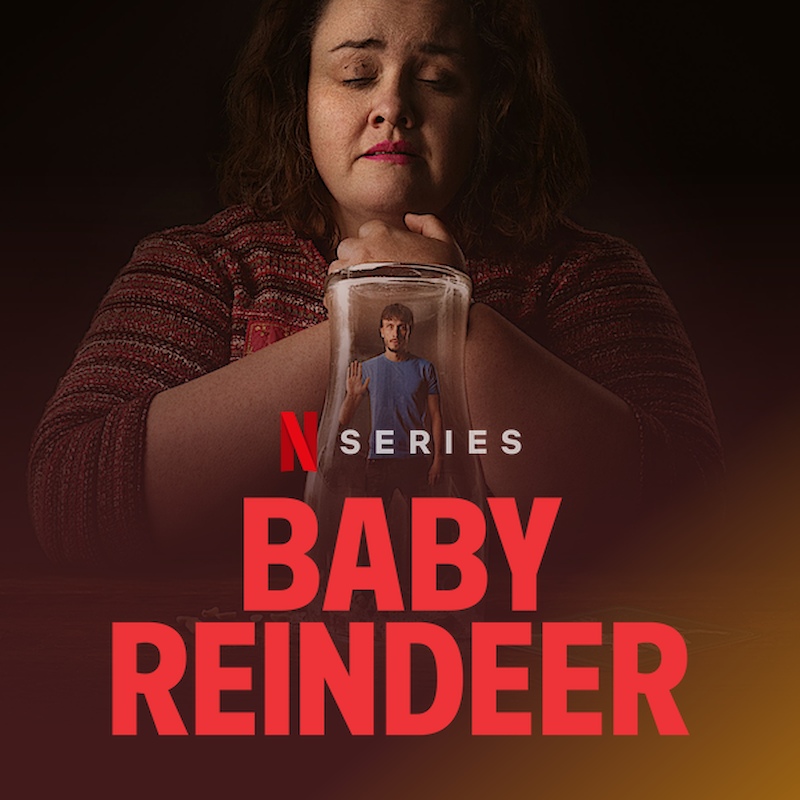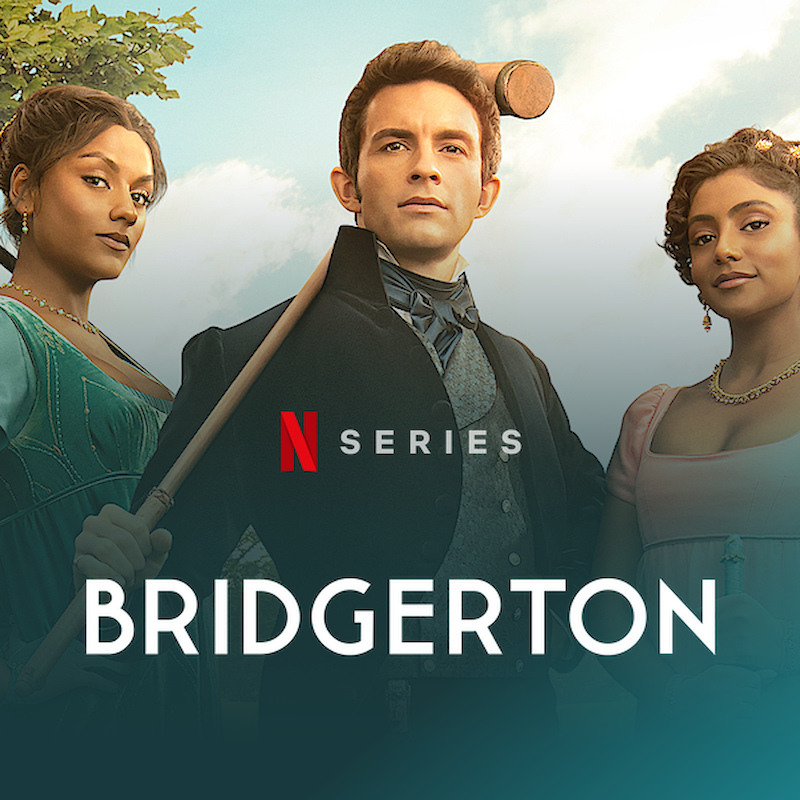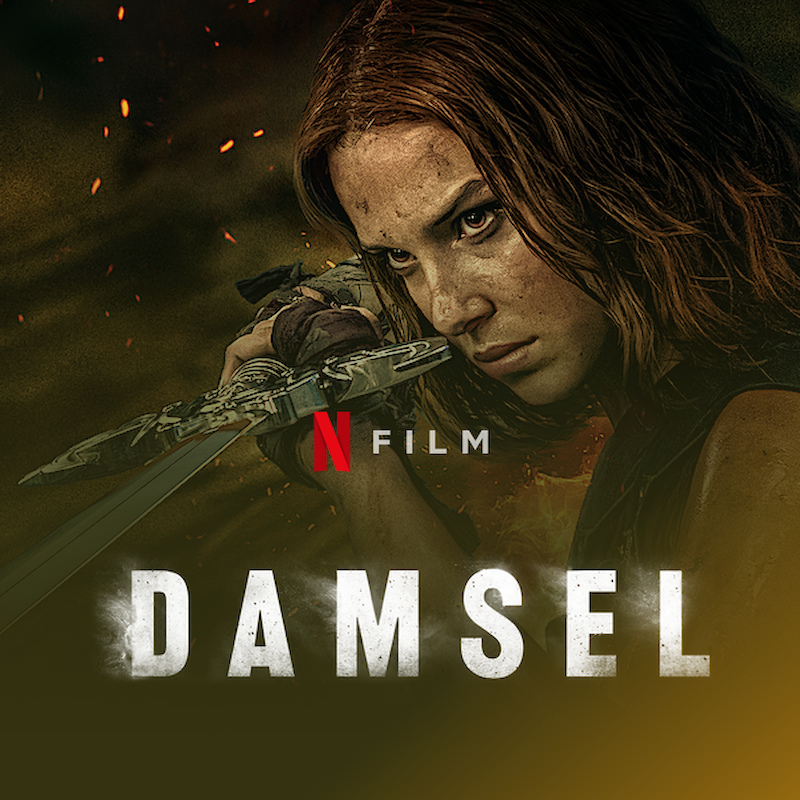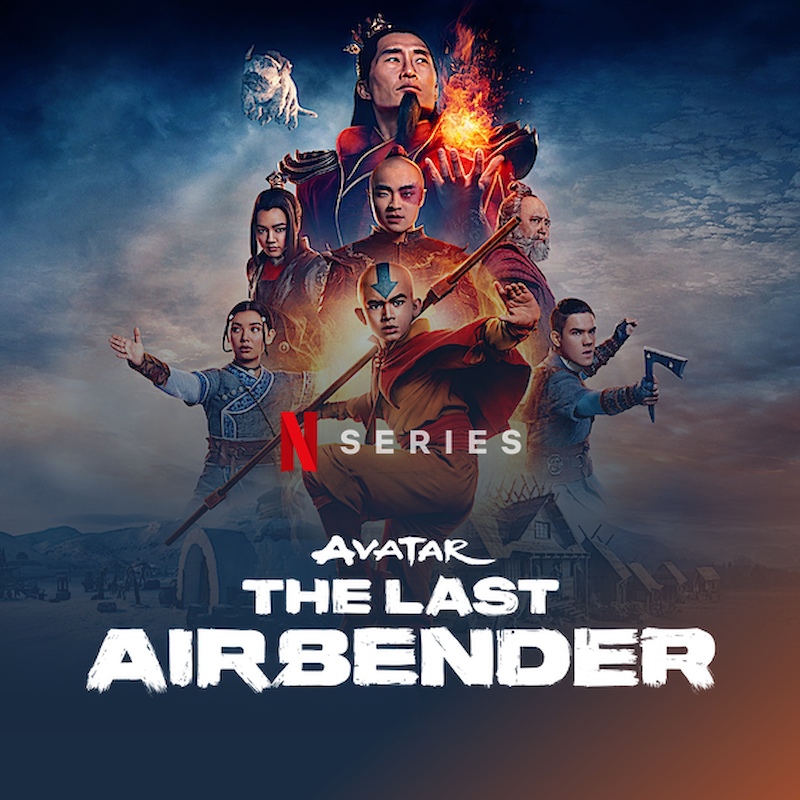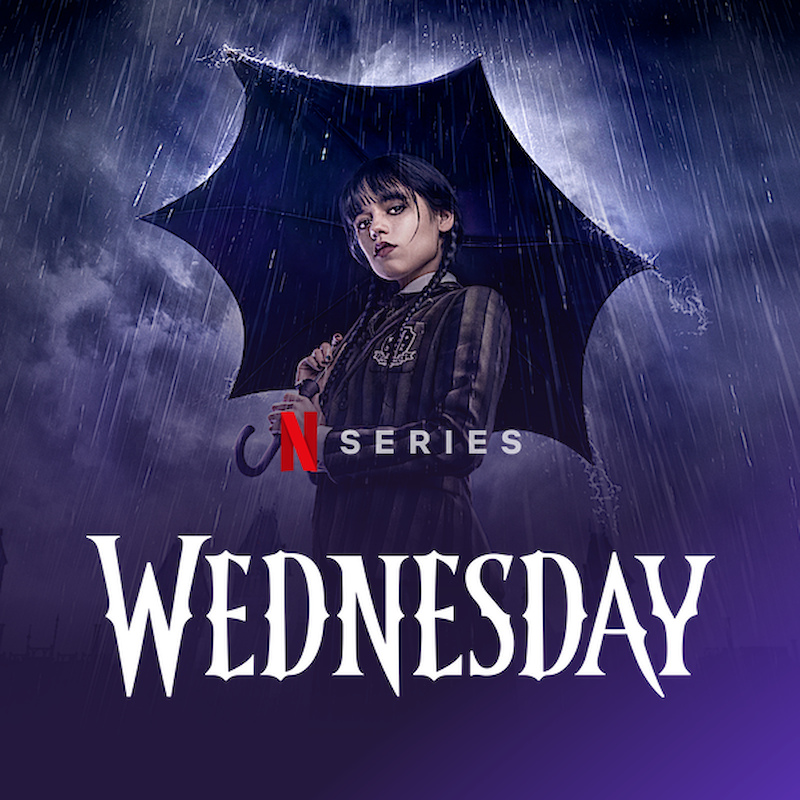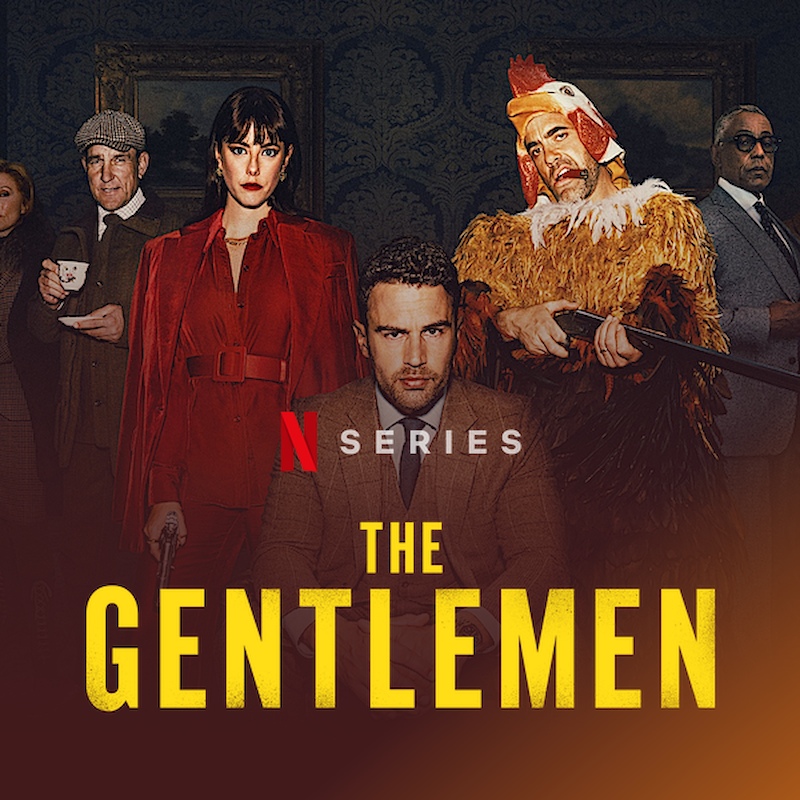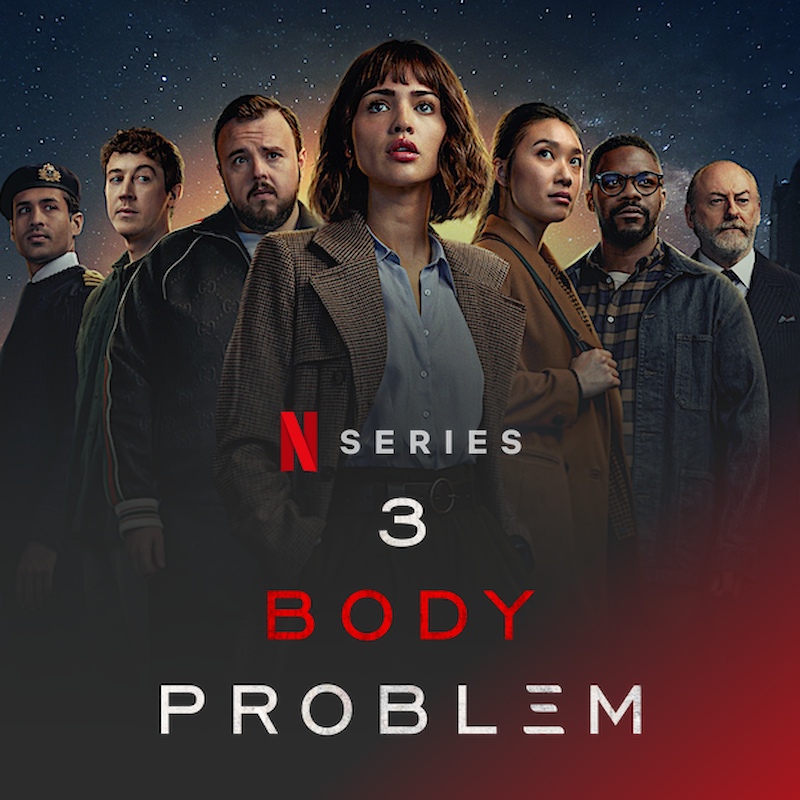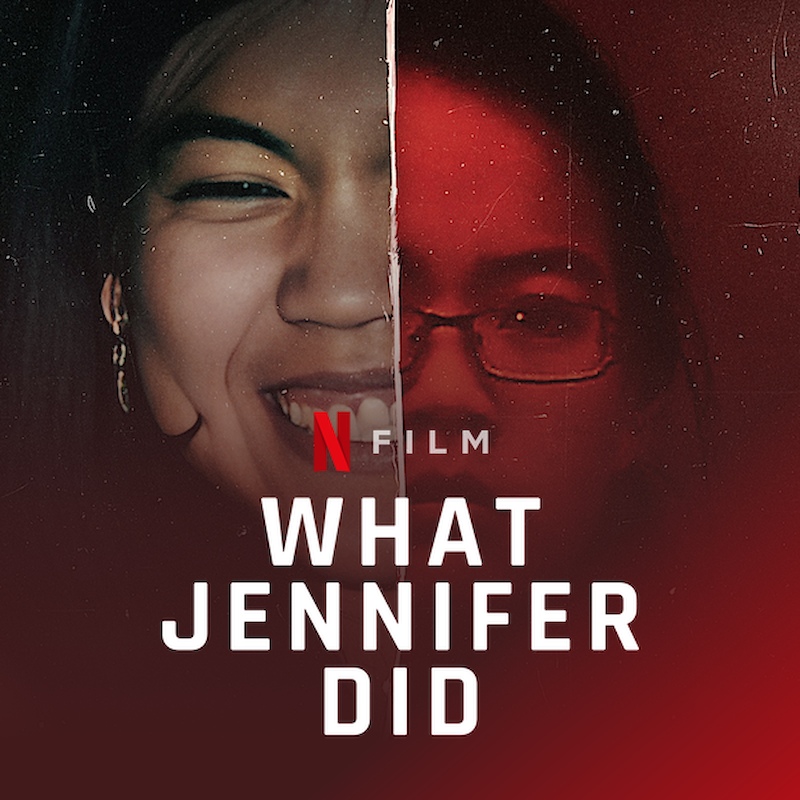Was 'Griselda' Really Filmed in Miami? - Netflix Tudum
How Griselda Recreated the Gritty Excess of Miami’s Cocaine Capital Era
La Jefa’s Miami isn’t so pretty in pink.
Griselda is not the story of a hero. Inspired by the life of Colombian businesswoman Griselda Blanco, it’s a fictionalized dramatization in which “there are so many nuances to explore in terms of who she was as a woman, as a mother, and, of course, as a drug lord who created one of the most profitable cartels in history,” says executive producer and star Sofía Vergara.
The limited series recreates the early days of the cocaine craze — and new money — sweeping Miami in the late ’70s and early ’80s. Co-created and executive produced by Eric Newman and directed by executive producer Andrés Baiz (both of Narcos, Narcos: Mexico), Griselda taps into a time when Griselda Blanco’s savagery and charisma helped her expertly navigate between business and family, to whom she was known simply as “the Godmother.”
The grit of her surroundings needed to match the toughness of her character. Let’s put it this way: “Griselda was one of those people that probably, from the time she was fucking born, was a baller,” says costume designer Sarah Evelyn. “She was just a gangster and she was going to look like it.”
To translate her ascendance to the screen, every department head, including series director Baiz, production designer Knut Loewe, set decorator Kim Leonard, Evelyn, and costume supervisor and designer Safowa Bright Bitzelberger needed to be in alignment on the restricted, warm tones of Griselda’s Miami, where stereotypical ointment pink was more of a background color. The ’70s era was more about muted earth tones — blues, greens, reds, browns, golds, yellow ochre, olive, sage, and orange. Even the saturated and vibrant pastel looks that dominated the ’80s in her corner of Miami eschewed campy turquoise or neon hues at all costs.
While the era wasn’t without its share of flamboyance and fun, the wealth in Griselda is achieved through lethal and illegal means. “It is not about a glamorous life. It was often bloody and terrifying,” says Vergara. That duality is present in every element of the series, from the mid-century modern homes to the lamé wrap dresses. Hear straight from the cast and crew about how they built a Miami — and no, they didn’t really film in Miami, for a surprising reason you’ll discover below — fit for a ruthless jefa.
Hair and makeup in ’70s and ’80s Miami
“It was Miami in the ’70s and the ’80s. Getting the look correct was very important to me,” says Vergara. You won’t see Vergara’s signature eyebrows or any traces of Modern Family’s Gloria Pritchett when you behold her transformation into her drug queenpin character. Since Vergara is in nearly every scene in the series, her physical appearance was one of the toughest aspects of the whole show to nail down. “What we decided was that she had to be different than Sofía, but we shouldn’t imitate Griselda Blanco,” says Baiz. After spending hours in the makeup trailer every day, Newman remembers that no one on set ever saw Vergara on set as herself. “She was Griselda.”
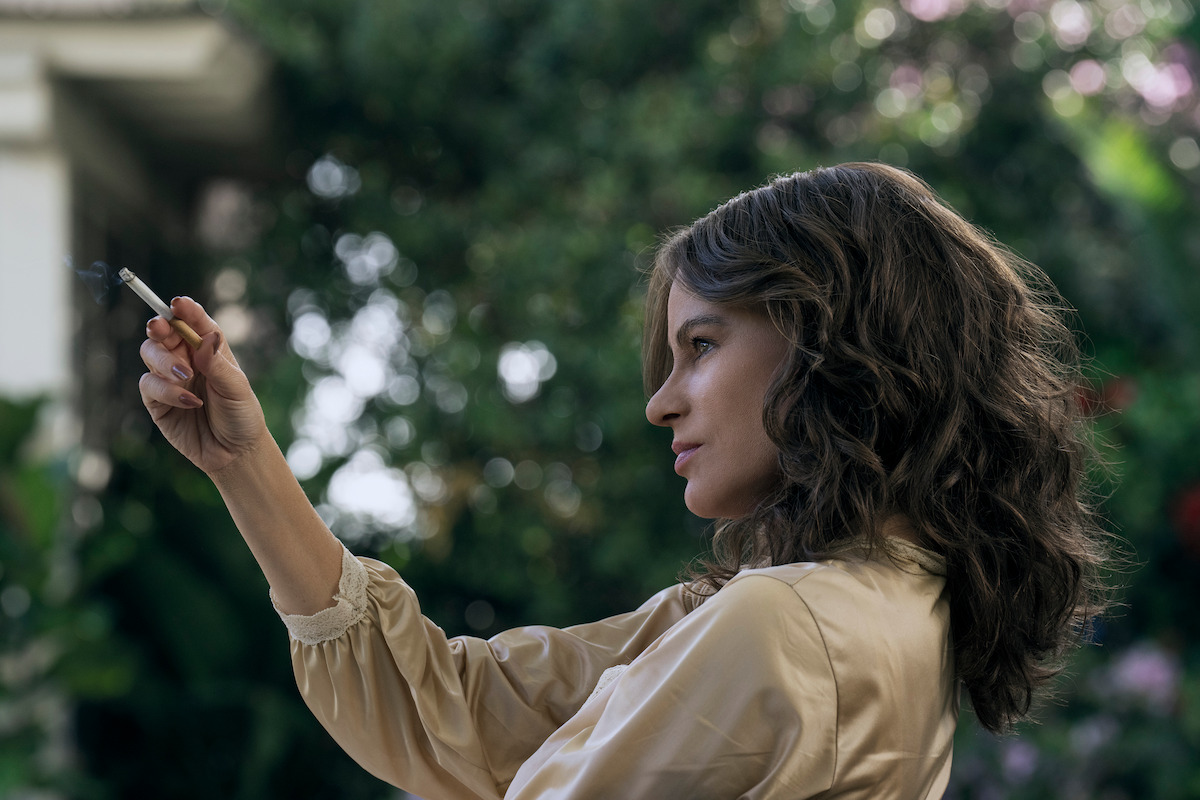
The actor praises her hair and makeup design team, who achieved her tweezed-out, late-’70s look with false eyebrows glued onto prosthetic brow covers . They gave her a prosthetic nose and a plate of teeth that are slightly bucked, and a bit yellowed, because Griselda smokes cigarettes throughout the series. Vergara wore five different wigs for the various timelines that the series covers, altering her posture and the way she held her hands to capture the Godmother’s essence: Griselda’s power was in large part due to how she carried herself. “That’s a huge connecting point between her and Sofía,” says co-creator and co-showrunner Doug Miro.
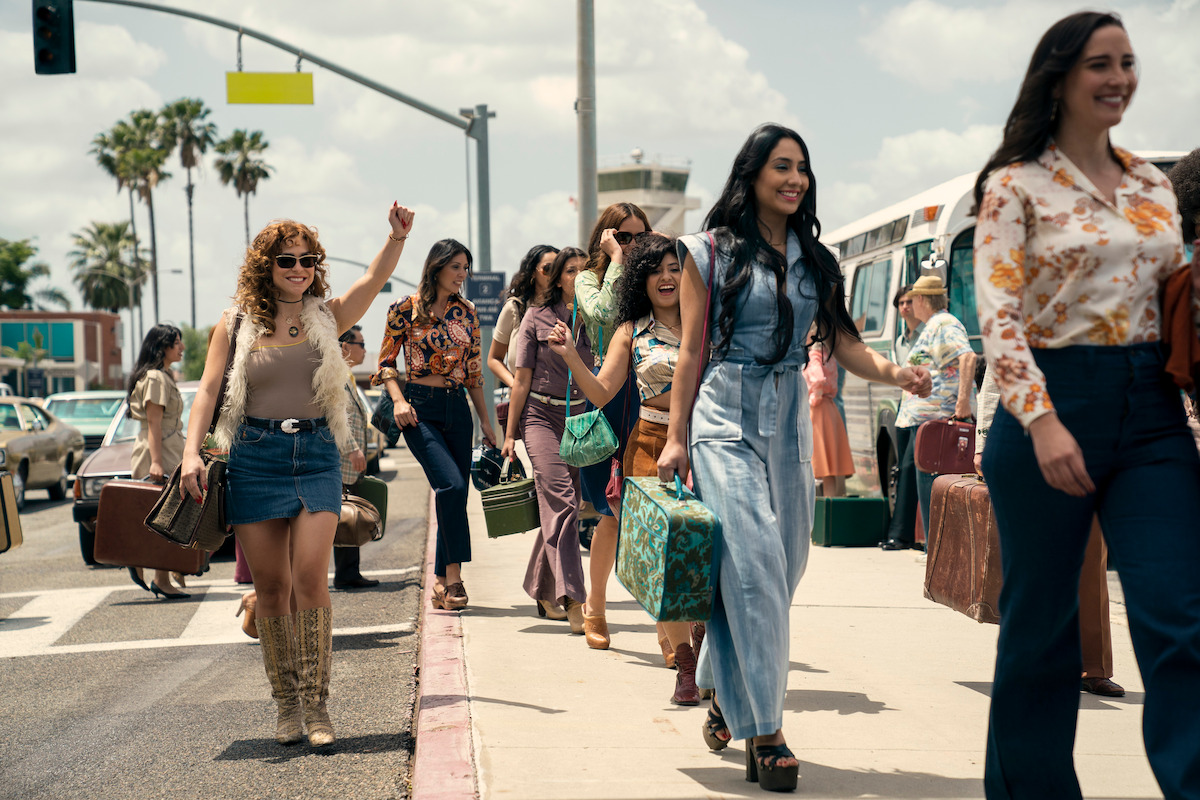
Fashion in ’70s and ’80s Miami
“The ’70s [were] fucking sexy,” says Evelyn. “And then you’re talking about Colombians in Miami.” Diving deep into that milieu of unbuttoned button-down shirts and big round sunglasses required scouring documentaries, old newspapers, and vintage catalogs for inspiration, as well as foraging through the archives of costume houses like Western Costume and studying photographers of the period, including Guy Bourdin and Larry Sultan. The team gathered historical background directly from costumer Angelina Trivino, whose mother grew up in the same Colombian town where Griselda lived: Trivino had access to the local library and personal interviews. They also watched classic films of the era like Scarface and The Godfather, a particular touchstone. “I thought a lot about, ‘What would the Godfather do? What would Griselda do? WWGD!’” Evelyn says.
The department also turned to actor Juliana Aidén Martinez, who plays law enforcement officer June Hawkins, as she had many conversations with the real June (now June Hawkins-Singleton) and her son. Martinez brought photos Hawkins-Singleton shared with her to fittings, which helped Bitzelberger find a dress very similar to one June had worn. The photos also informed other details, such as how June often wears sunglasses on the top of her head. “I used to do [it] all the time because Miami’s sun is horrendous, but they also used to just keep my hair out of my face,” says Hawkins-Singleton. It was also helpful for Bitzelberger to understand that the law enforcement characters’ style in the series wasn’t as “transformative [over time] as the cartel side, because these people aren’t millionaires.”
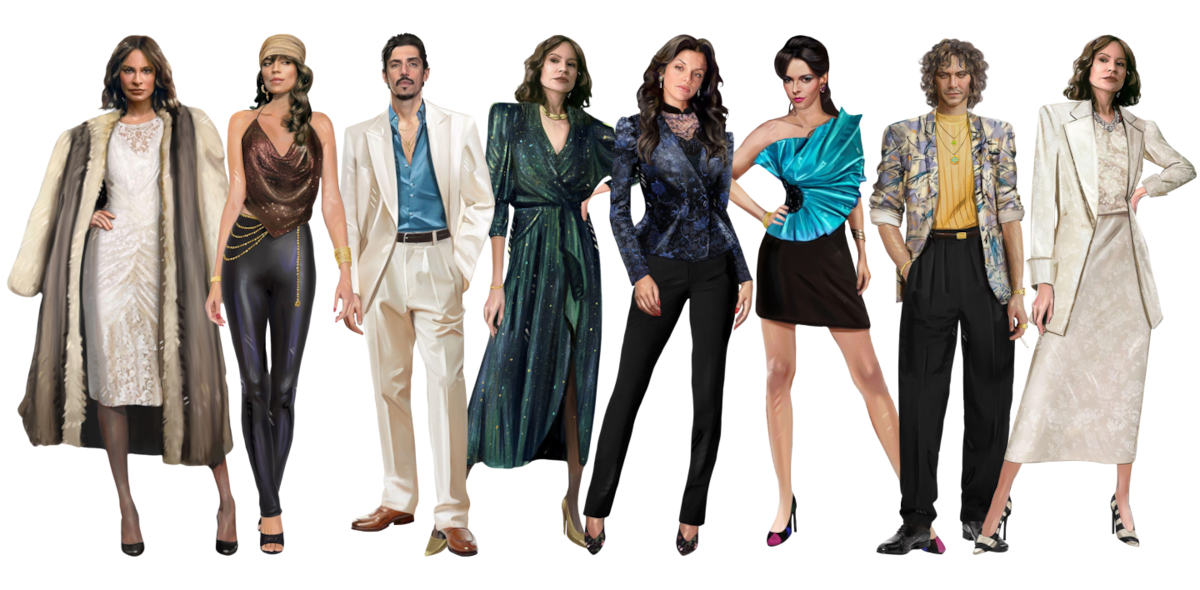
For the ’80s looks, Bitzelberger steered away from the decade’s sitcoms and instead reflected on her own memories of growing up in that era and her chic mother’s style. She also turned to the influence of period shows like Miami Vice and Dynasty. To find vintage pieces like high-waisted pants and other period staples, the costume department turned to vendors Kiki Stash, Liz Baca, and Torso Vintage, among others. But many of Griselda’s clothes were custom-made, even down to reproducing and digital printing unique fabrics and prints so they’d have multiples on hand. To make button-down shirts, they sourced vintage Qiana, a specialized nylon material, which is “really hard to find because it’s not made anymore,” says Evelyn.
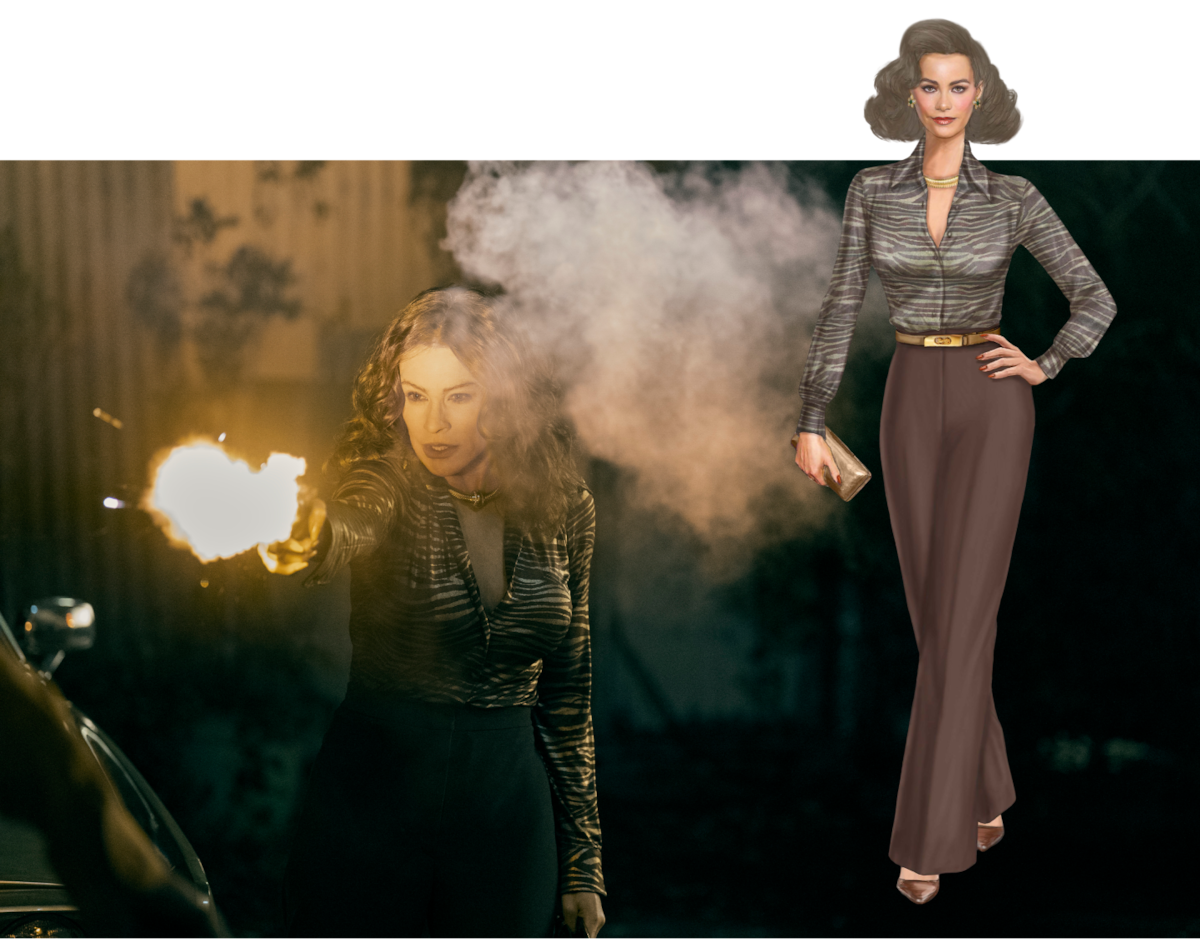
Griselda’s fashion journey spans the late ’70s in Miami through the ’80s, so the costume team’s fashion inspirations included icons like Cher, Gena Rowlands, Catherine Deneuve, and Diana Ross, as well as Michelle Pfeiffer and Al Pacino in Scarface. Designer references included Diane von Furstenberg, Versace, Givenchy, Thierry Mugler, Jean-Paul Gaultier, Bob Mackie, Halston, Yves Saint Laurent, Vivienne Westwood, and Christian Dior. But Vergara also wanted to follow her own instincts about what really felt like Griselda, whose finger wasn’t exactly on the pulse of every trend of her time. “It was still about showing that she had money, but having it dialed down a bit,” says Bitzelberger.
From the first fitting, they knew vintage would be Griselda’s go-to, and that she could really rock a pant, ’70s rayon shirt, and a wrap silhouette. “She was very Halstonian in the beginning,” Evelyn says. Most of her lamé wrap dresses were custom-made based on vintage items, like the cross-weave plissé lamé dress she wears to her husband Dario’s (Alberto Guerra) birthday party in Episode 5. Bitzelberger built the dress off of a silhouette, with cutter and seamstress Joanne Trotta helping make the teal emerald green go in one direction and gold in the other. And Vergara came up with the concept of Griselda pairing black pantyhose with her gold disco dress on the yacht. The second she put them on, “it was like, boom! There she is,” says Evelyn.
The sheer quantity of custom dresses was necessary because, when she starts out, Griselda literally gets her hands dirty in order to grab what she wants. “In those earlier episodes, there’s a lot going on. She’s in a shootout, she’s knocking someone’s knees off,” says Bitzelberger. But that changes at the top of Episode 5 when the show transitions into the ’80s, and Griselda is running things at the Mutiny nightclub. “Instead of her going there to talk to the king, she is the queen now,” says Bitzelberger. She wears more white dresses — and it’s not because her last name is Blanco. Now at the height of her powers, Griselda has other people to do the dirty work for her. “I liked that polarity of having her in a light, bright color, but then, at the same time, she is still Griselda and has this dark power within her.” Bitzelberger also wanted to emphasize that Griselda didn’t need to wear a dark suit to be La Jefa. She can be just as ruthless sitting on her throne in a white lace dress.

The ruby ring Griselda always plays with when she’s plotting or stressed? That’s actually Vergara’s own. And since the series was originally called Emerald (a reference to Griselda fleeing Colombia with her kids, cocaine, and some jewels), that meant meticulous back-and-forth discussions when designing Griselda’s emerald earrings and the necklaces she had made for her sons in the finale. Most of Griselda’s necklaces and jewelry weren’t dainty or delicate but thick and a “real flex,” says Evelyn, as ’80s statement pieces especially had real weight and chunk.
You never know what Griselda’s resourceful right-hand man is going to do in the series, but you can count on him to be bold, unafraid, and sensual. And that’s just talking about his clothes, which range from monochrome mauve sets to loud Versace prints to fishnet tanks. The costume designers had already planned on leaning into the “bow-chicka-wow-wow ’70s” with his character, dressing him “wild on the outside because he was wild inside,” says Evelyn. But they could go even further with patterns and fabrics once Rodríguez was cast because, as they discovered, “he could wear all these clothes and he wasn’t getting worn by them,” says Evelyn. “[He] could walk into anything and make it look amazing.” Bitzelberger was impressed by the subtle flourishes Rodríguez would add to his look, whether pushing his sleeve up or unbuttoning his shirt a certain way.
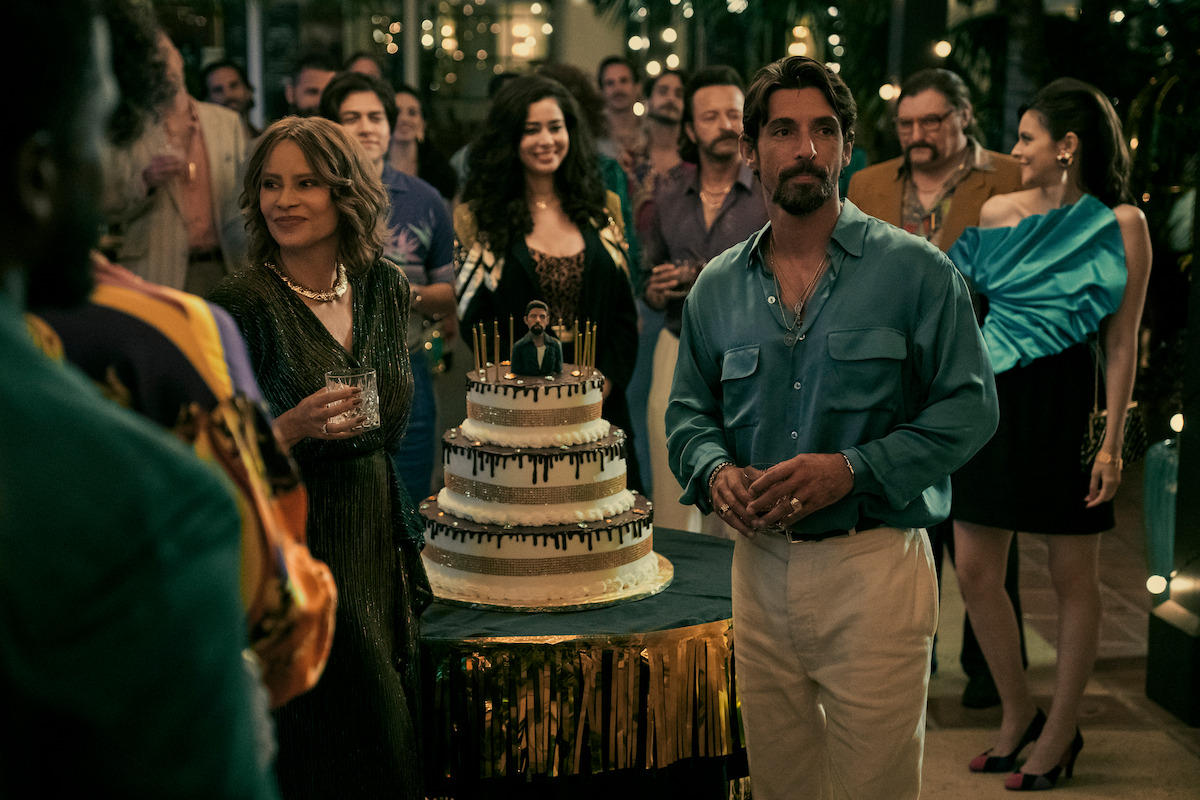
Griselda wasn’t the only one whose style changes with her ascension. Her friends and employees, including Isabel (Paulina Dávila) and Carla (Carolina Giraldo, aka Karol G), arrive in Miami with bohemian sensibilities, prompting Bitzelberger to ask, “How are they spending their money, now that they’re making more money because of Griselda?” Even Griselda’s sons wear super-expensive, casual ready-to-wear as they grow up in the show. “They would be wearing a popped-up collar polo and an acid-wash, really cool jacket that I know at the time — because I lived then — was $500, which now is the equivalent of $2,000,” says Bitzelberger.
While June’s rise in a male-dominated environment as she leads the CENTAC investigation mirrors Griselda’s, “we’re seeing [style] on the single mom who didn’t have a ton of money, who is aspirational,” says Evelyn. Griselda and her crew might be more fashion-forward, but June would still have held onto clothes she bought earlier in the ’70s. She could still maintain her timeless and neutral pieces and afford to occasionally rotate in a nice new watch or suit. “In some ways, June’s outfits were as sexy and cool as Griselda’s, just different,” says Evelyn.
Dario is another character who doesn’t follow trends but does don fancier clothes after he marries Griselda, since la madrina wouldn’t let her husband dress like he’s just her gunslinger. While Guerra didn’t want his character to look like he was “dripping in money,” he did believe that Dario’s simple style would be made of the most beautiful materials, like a silk shirt or custom slacks. “Although there are some people that will reinvent themselves if they suddenly have money, you tend to have a sense of style that carries over,” says Bitzelberger. And after Dario leaves Griselda and goes back home to Colombia, he reverts to his old looks. Adds Bitzelberger: “As soon as he could strip that away and leave Miami, he also stripped away that part of himself.”
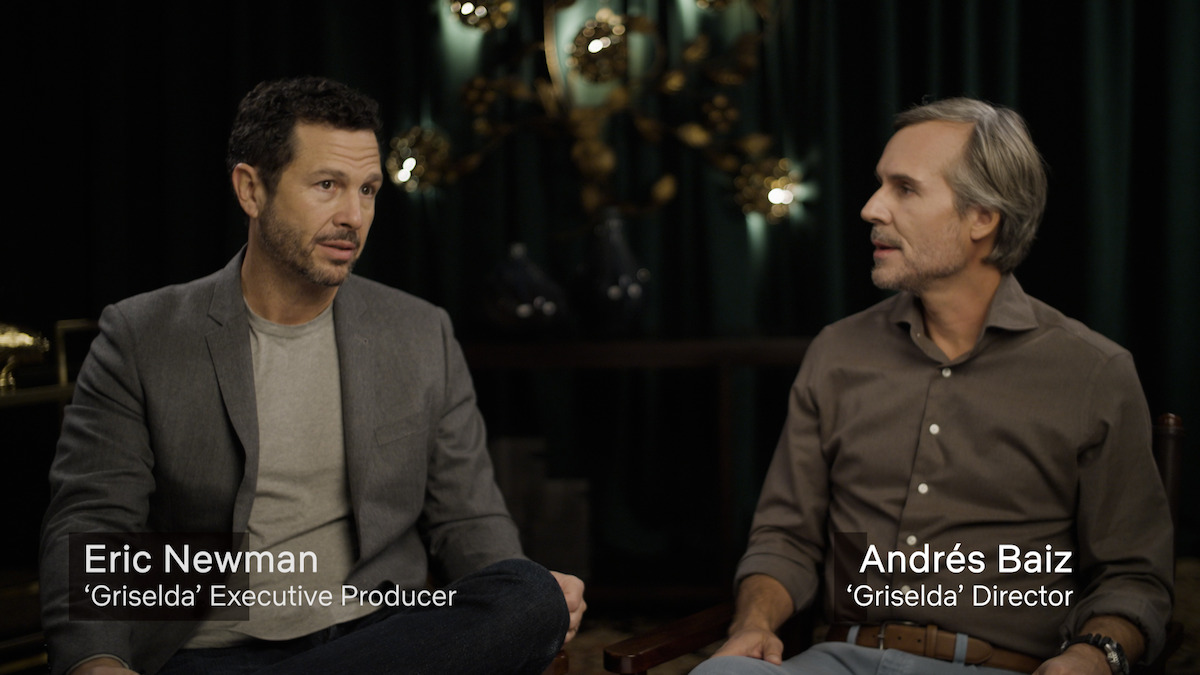
Locations in ’70s and ’80s Miami
Surprise! Nothing in Griselda was actually filmed in Florida — which, counterintuitively, was in an effort to make the production truer to retro Miami. “Authenticity is everything to us,” says Newman. “When we couldn’t go to Miami, because Miami looks nothing like pre-cocaine explosion Miami, where our story is set, we had to recreate it in Los Angeles, and we were very meticulous about it.”
Unlike actual present-day Miami, plenty of areas in LA felt completely preserved, were more cost-effective, and were next to the ocean. The show’s director of photography, Armando Salas, was raised in Miami, so he knew how to create the right illusion — down to making the Miami sky look right in VFX. Experienced in period dramas, Loewe knew that while their technology and fixtures might be updated, most homes possessed the bones of the previous decade or two. For ’70s and ’80s Miami, that meant looking to the mid-century modern homes of the ’50s and ’60s for inspiration. Loewe would take Baiz on what he affectionately calls “architecture-lover tours,” where they scouted locations — from LA proper to Long Beach — designed by architects like William Pereira, who put their stamp on the period.
Pereira designed the Frank Sinatra House in Chatsworth (the Ochoa residence) and the Dorothy Chandler penthouse at the Los Angeles Times building, which stood in as Miami kingpin Amilcar’s (José Zúñiga) apartment. “I’m a mid-century fan, so I walk through these sets and I want to take home everything,” said co-creator and co-showrunner Ingrid Escajeda. Procuring the Killingsworth house in Long Beach (Marta Ochoa’s [Julieth Restrepo] Miami oasis) was a big coup for production — it was originally the home Edward Killingsworth designed for himself. “We were just foaming at the mouth to get into it,” says Leonard, who reveals that Griselda is the first production to film there.
Several of the more nondescript motels in the series were actual locations in Long Beach accompanied by stages the set design team built. You don’t see water, beaches, harbors, or marinas from those motels, “but we got away with it,” says German-born Loewe, who found those seedy ’50s and ’60s motels to be “iconic of the United States — don’t laugh!” Even the hand-painted banana and palm tree leaf wallpaper you see inside Griselda’s first motel room is meant to sweep viewers away to Florida — the greens department also placed tropical plants and trees outside. “It’s part of the Miami and Florida story of Caribbean influence,” says Leonard.

In case you missed it, Amilcar’s penthouse has real snakes inside, signifying how his home is a pit of treachery. “There was a theme of animals with the real-life narcos that I really wanted to maximize, because there’s nothing that screams excess like giant gold tortoises,” says Leonard. The black jaguars adorning Amilcar’s doorway are symbols for deadly power, but they’re very expensive and completely useless. “We were using the term ‘fuck-you money’ a lot,” says Loewe. During this period, there were no limits on flaunting your wealth if you had it. In Griselda’s final mansion, where she hosts Dario’s birthday, she has fu dogs in her study. These are historically believed to maximize good fortune and harmony, which Leonard thinks is ironic. “Who else would have those but somebody who’s powerful and a little suspicious of everything?”
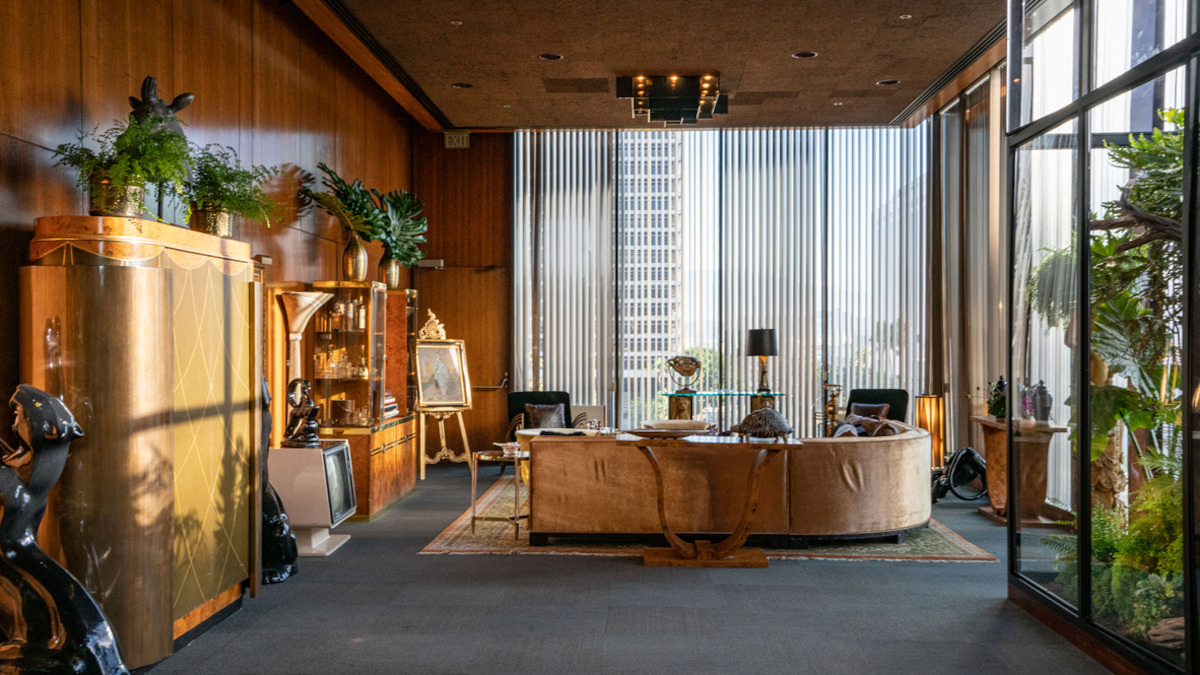
The increasing size and stateliness of Griselda’s homes are monuments to her hollow wealth, influence, and mounting paranoia. The first home she buys, where her girls from Colombia move in with her, was filmed at a house in Pomona, California, that actually used to be an asylum and hospital. Her larger Palm Beach hideaway, which was filmed at a house in Benedict Canyon, “is old money like Bel Air is old money,” says Leonard. “It’s Norma Desmond. It’s Miss Havisham — and exactly where Griselda would live if she were hiding out in LA,” adds Newman. As neglected as the once-opulent space might look, that’s only the half of it. When Leonard and Loewe arrived, there were plants growing out of the toilet because the house had flooded and no one had looked after it for years. The duo tied that into the backstory they dreamed up for the series — that the previous owners, who “definitely participated in dog shows,” left their over-the-top French furniture and Limoges collection behind. The withering foliage and peeling wallpaper of Griselda’s wartime rental shows how she “feels secluded and protected, but at the same time, it represents the decaying aspects of her personality and soul,” says Baiz.
Oh, yes. The Mutiny Hotel’s nightclub was a notorious meeting place for Miami’s drug circles to socialize and strike deals. Scenes at the Mutiny were filmed in two places: a hotel built in the ’80s in the City of Industry for the exterior and the retired Queen Mary ocean liner for the ballroom. The connecting element between the two spaces was the club’s glass ceiling, which Loewe’s team built twice. “We had quite a bit of liberty with Mutiny because it was a secret, members-only club,” says Leonard. “There’s not a lot of evidence to back up what it looked like, so we knew what the feel of it was like — the excess of Miami in that time period — but maximized.”
One of Leonard’s mentors actually worked in the courthouse across from the Mutiny at its peak, so Leonard peppered her with questions about the time. “She would see a lot of the people who were in court with her getting sentenced or about to be tried, and then she’d see them at the club.” Griselda’s yacht party in Episode 2 was also held on a historic boat — one previously owned by Winston Churchill, where a young Queen Elizabeth II visited for a dinner party. It was later owned by the head of the Hells Angels. “You could make a movie on that boat only,” says Loewe.

El Floridita, the local spot where Griselda goes to meet Cuban drug lord Eddie “the Bird,” is meant to capture the spirit of Cuba. The people who frequent the restaurant in the series feel comfortable there, as if they know the folks in the vintage photographs that Leonard found to hang on the walls. “You can have your arroz con pollo, plátanos, and your Cuba libre, and that’s all natural. It makes you feel like it’s a bit of home.” The jukebox and musicians playing on the vintage electric keyboard are also nods to the ’50s classic cars that are still prevalent in Cuba.
Similarly, the coffee shop (or diner, really) where Griselda meets fellow Colombian Chucho in Episode 1 is actually Astro Family Restaurant in Silver Lake. It was an opportunity to bring back period American cuisine like pie, sliced Jell-O, and the kinds of foods you’d only find at a Latino grocery store nowadays. Astro’s main draw was the very ’60s-style orange tile, which Loewe was quite familiar with — he frequented the family-owned restaurant when he used to live on LA’s East Side.
Cars, phones, and liquor in ’70s and ’80s Miami
Loewe and Leonard are self-professed gearheads and petrolheads who’ve gone on car museum trips together and nerded out for hours. So Leonard felt like she could breathe easy on this project since no car “was going to slip by me and Knut.” It was “everyone’s nightmare to get cars in front of him and then me — it was fun for us, by the way.” Loewe admits to driving their action vehicle coordinator, who sourced cars from private collections, just “a little bit crazy” with their devotion to nailing every detail. “He came out with this 1968 Cadillac, and I pointed out that the hubcaps were wrong. I heard him say, ‘Oh, my god.’ ”
Cadillacs were still elegant in Griselda’s time. But American car culture was just starting to acknowledge European cars, and in the ’80s they were seen as a status symbol. The newly rich would self-import European cars that weren’t even on the market in the States yet, like the Maserati Bora, which wasn’t available in the US for almost a decade after it was introduced. They could spend $80,000 on a Cadillac, but they could triple that and get a Bora or a Lamborghini Countach. Leonard says that the influx of cocaine money into Miami epitomized this turn of the tide in expensive car culture, where the mentality was “everybody’s going to know me in Miami” — after they rode up to the Mutiny (which had a special porte cochere specifically so guests could show off their automobiles) in a car no one else had.
That’s why production gave Griselda the cream-colored Mercedes S-Class, the 450 SEL 6.9. Appearing in three episodes, it was the most expensive Mercedes you could buy at the time. If you noticed the white car parked in the lot outside the Mutiny, it’s a very rare and prestigious Lamborghini Espada by Bertone, which fancy elites would drive on the outskirts of Milan or Saint Moritz. In the background, you might also see a golden Rolls-Royce Silver Shadow — for the well-to-do who didn’t want to show off too much — and, of course, Ferraris.
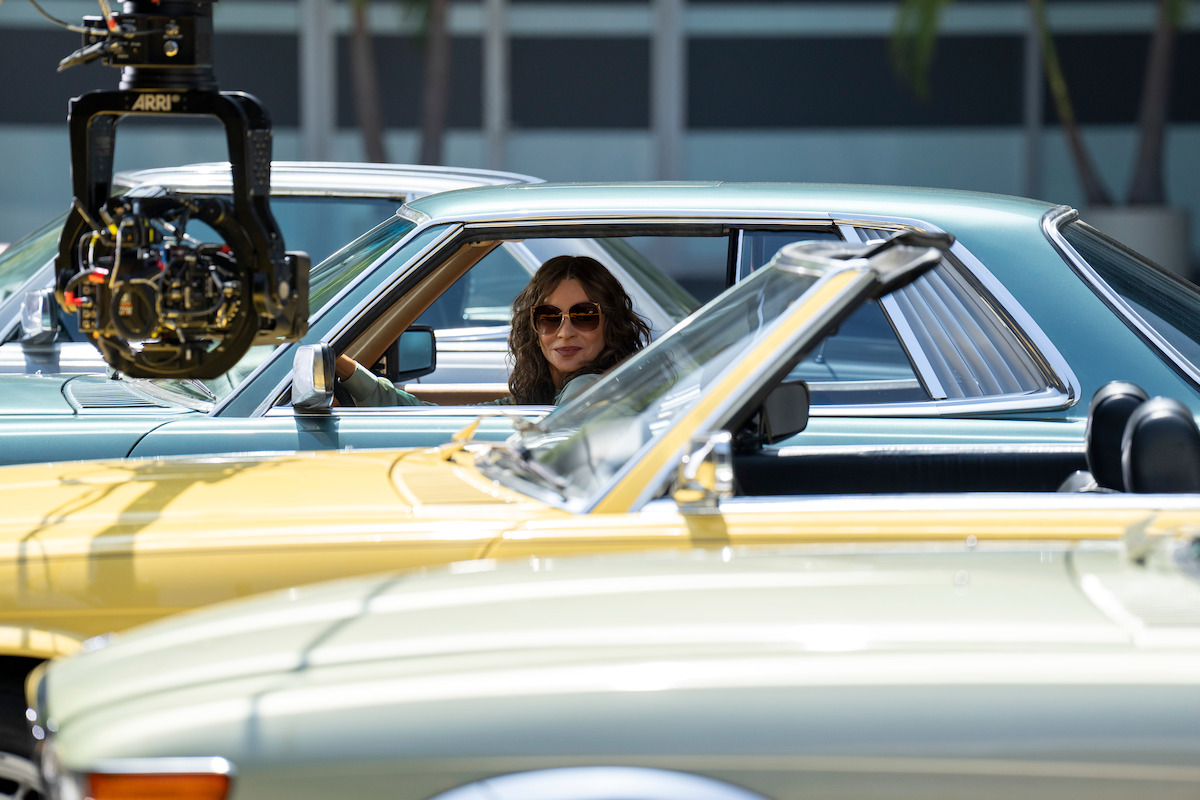
Whether a character in Griselda is holding a phone or one is seen in the background, Loewe and Leonard considered phones to be important time references in the series. They paid attention to details, down to how the jack connected to the bottom of the handset. Leonard spent months collecting around 150 phones for the show. With every mood board for a set, there would be a conversation about phones or even a tutorial on how to use them with Baiz. “They weren’t straightforward, and they started getting stranger, more interesting, and arty than just a regular phone,” says Leonard.
The more extravagant phones in Griselda range from one inside a gold clamshell to another in a wooden carved box at the Palm Beach estate. In particular, the silver phone at the Ochoa home needed to convey the exorbitant level of “fuck-you money” of the era that the family possessed, down to the length of the phone cord. “When you have money, you could have a 100-yard cord with somebody bringing it to you on a tray. And the phone better be perfect,” says Leonard. “That thing coming on the tray better be amazing.”
Loewe and Leonard transformed a Sears in Cerritos for the infamous shoot-out at Crown Liquors, where Dario and his crew kill Griselda’s former business partner, German. They referenced video footage of the original newscast for the exterior and the van that carried the guns parked in the lot in front of the store, “because that’s iconic,” says Loewe. The interior, on the other hand, was their historical playground. Unlike liquor stores in other parts of the country, this liquor store only sold liquor. Sourcing the correct brands and liquor company displays (such as Midori, Frangelico, and Tuaca) was painstaking.
“To be able to use those real brands of that period and really reflect what was becoming popular at that time in Miami, and the culture that was coming into that liquor store, was absolutely amazing,” says Leonard. Piña coladas were the drink in Miami at that point, and mojitos were starting to come around a little more too. Even the store’s cooler was particular, as they’ve changed over the decades. It took a month alone for the team to finalize those details, from how beverages were displayed on the rack inside to the right way to open the door.
Stream Griselda now, only on Netflix.
Additional reporting by Drew Tewksbury.
All About Griselda
- Deep DiveShe allegedly killed all her husbands. But that’s not the wildest thing about her.By Drew TewksburyFeb. 8
- Who’s WhoSofía Vergara, Karol G, Alberto Guerra, and more star in the limited series.By Phillipe ThaoFeb. 6
- News“Those little moments, those little details really make this show special.”By Drew Tewksbury and Trish PhamFeb. 2
- Needle Drop“Hot Stuff” by Donna Summer? We’ll race you to the dance floor.By Tara BitranJan. 25
- NewsLa Jefa has arrived.By Tara Bitran and Phillipe ThaoJan. 25
- Deep Dive“She gave the show a very specific authenticity and an energy.”By Phillipe ThaoJan. 25
- Sneak PeekWatch the grisly first scene now.By Drew TewksburyJan. 24
Shop Griselda
Discover More Deep Dive
- Deep DiveThe Spanish investigative thriller follows two parents in the wake of their daughter’s murder.By Ingrid OstbyMay 3
- Deep DiveThe period drama from Sanjay Leela Bhansali follows the lives, loves, and tragedies of 1920s courtesans.By Ingrid OstbyMay 3
- Deep DiveExpect bigger homes and even bigger drama.By Cole DelbyckMay 3
- Deep DiveIs it based on a true story? Well, yes, but actually, no.By R.J. JohnsonMay 3
- Deep DiveNot only is the Devlin family on a murderous time loop, but we also learn about Charles’ painful past.By Tara BitranMay 2
- Deep DiveYou’ve been sucked into a puzzle dimension!By Jason FanelliMay 1
- Deep DiveThe film follows a young woman being hunted by two sketchy men in Kentucky.By Ingrid OstbyMay 1
- Deep DiveWhat if your ex-girlfriend made a top-secret career change?By John DiLilloMay 1
Discover More Drama
- ExplainerShowrunner David E. Kelley warns, “Beware the male ego.”By Christopher HudspethMay 3
- Up CloseThe Bridgerton stars are in bloom.By Ariana RomeroMay 3
- What To WatchGet caught in her Madame Web, fall in love with Anyone But You, and more.By Erin CorbettMay 3
- News#Polin season will start blooming on May 16.By Ariana RomeroMay 3
- Press Play“There are people out there for you.”By Tara BitranMay 3
- What To WatchFilms for lifelong New Yorkers, big city hopefuls, and everyone in-between.By Kase Wickman and Erin CorbettMay 3
- New on NetflixWatch new episodes of Bridgerton, the live roast of Tom Brady, and more.By Erin CorbettMay 2
- What To WatchLight your favorite seasonal candle and settle in.By Tara BitranMay 2
Latest News
Popular Now
- Netflix Is A JokeThe NFL GOAT won’t need a helmet, but that doesn’t mean he couldn’t get sacked.By Paul SchrodtApril 22
- NewsPlease welcome to the stage, Donny Dunn.By Christopher HudspethApril 15
- NewsJoin the Pogues for their next chapter in 2024.By Tara BitranMay 2

